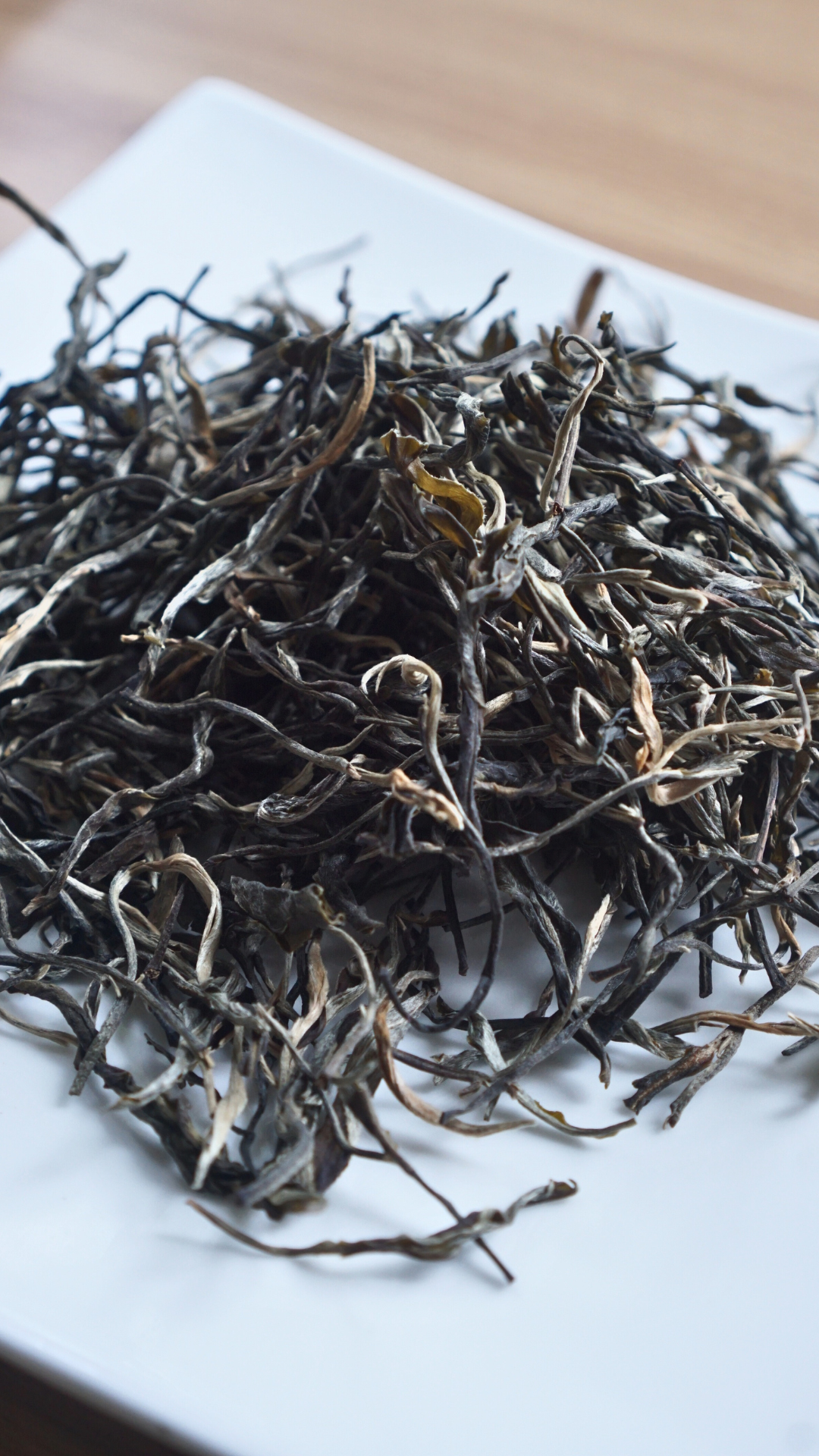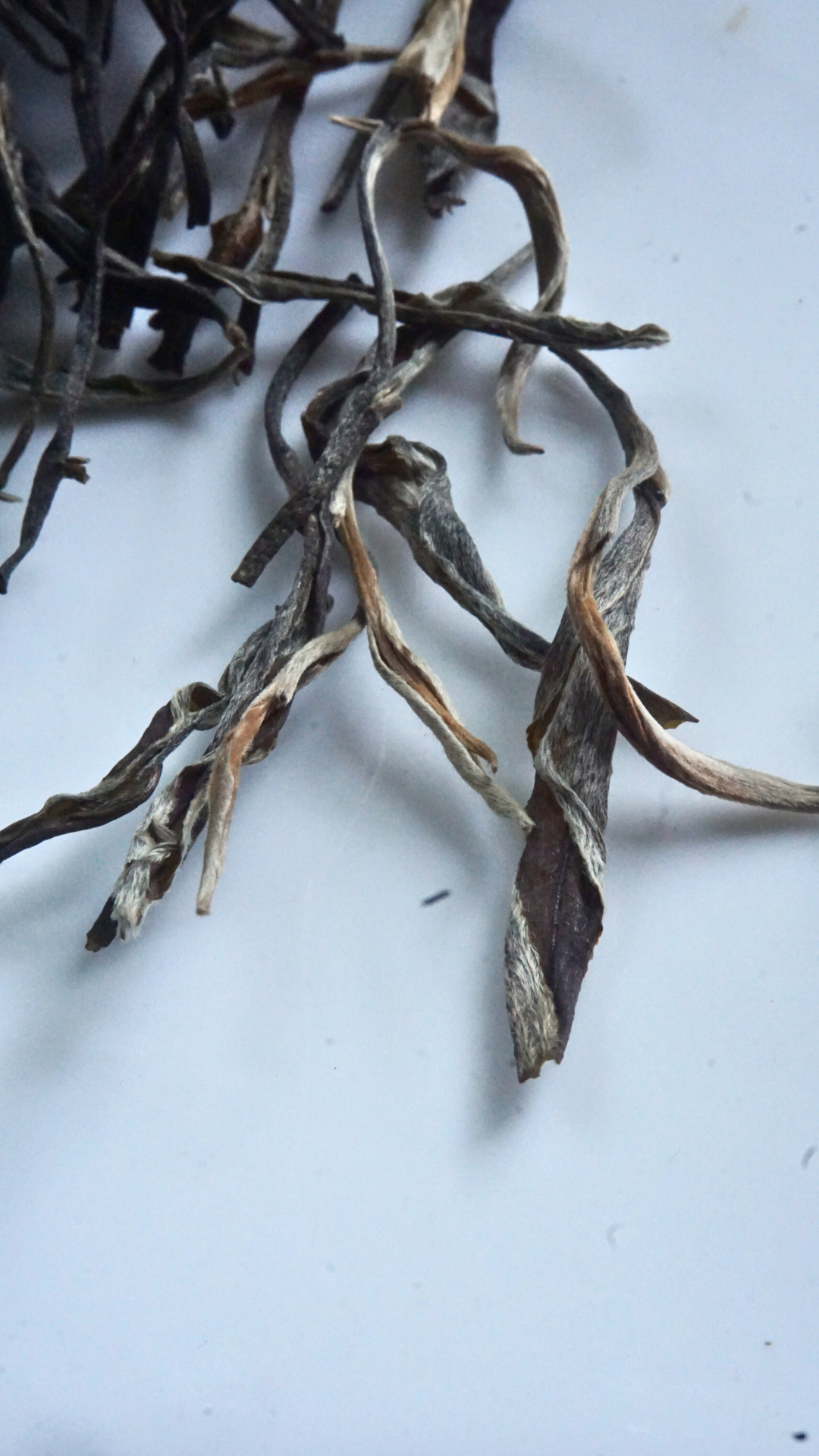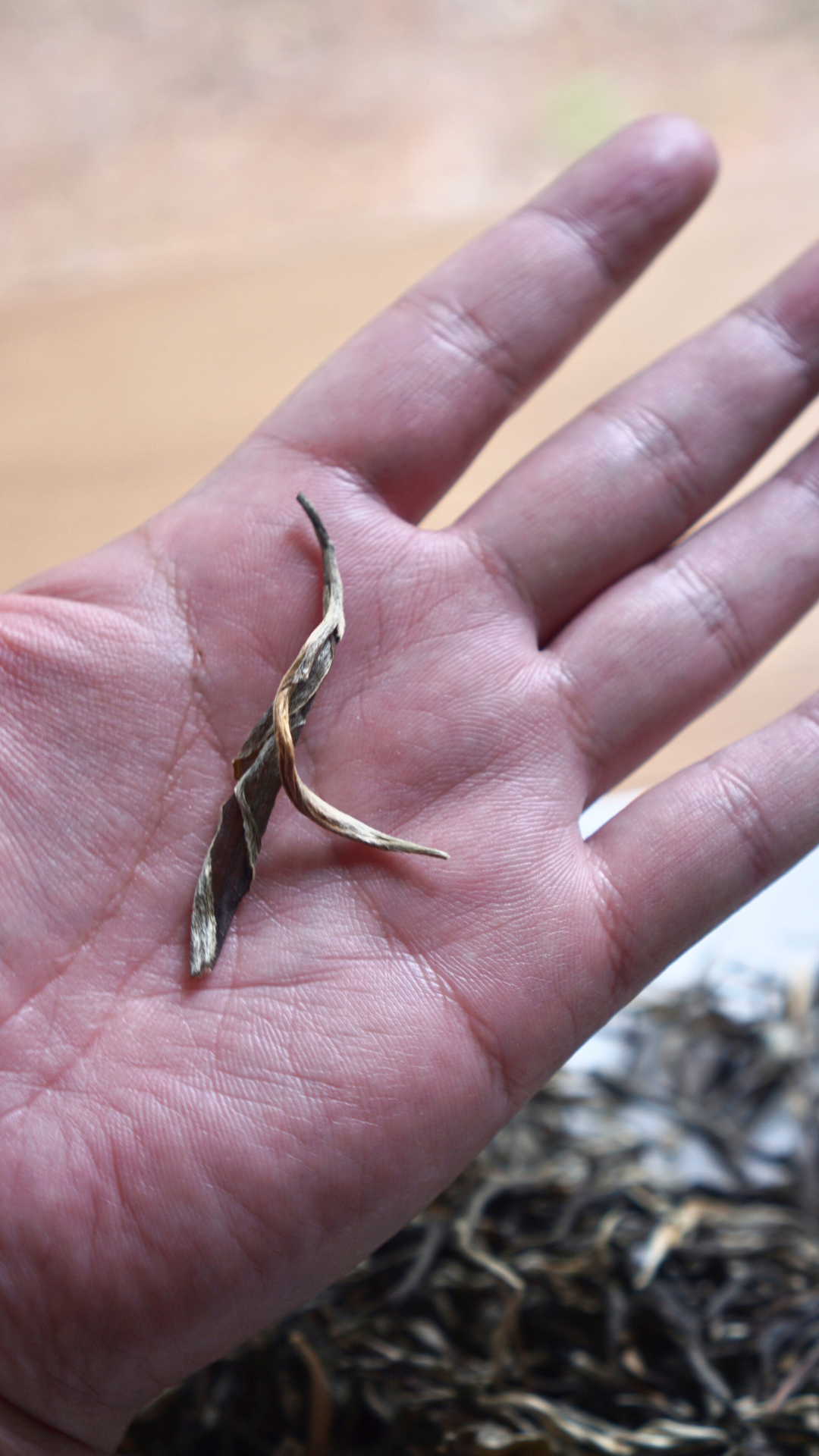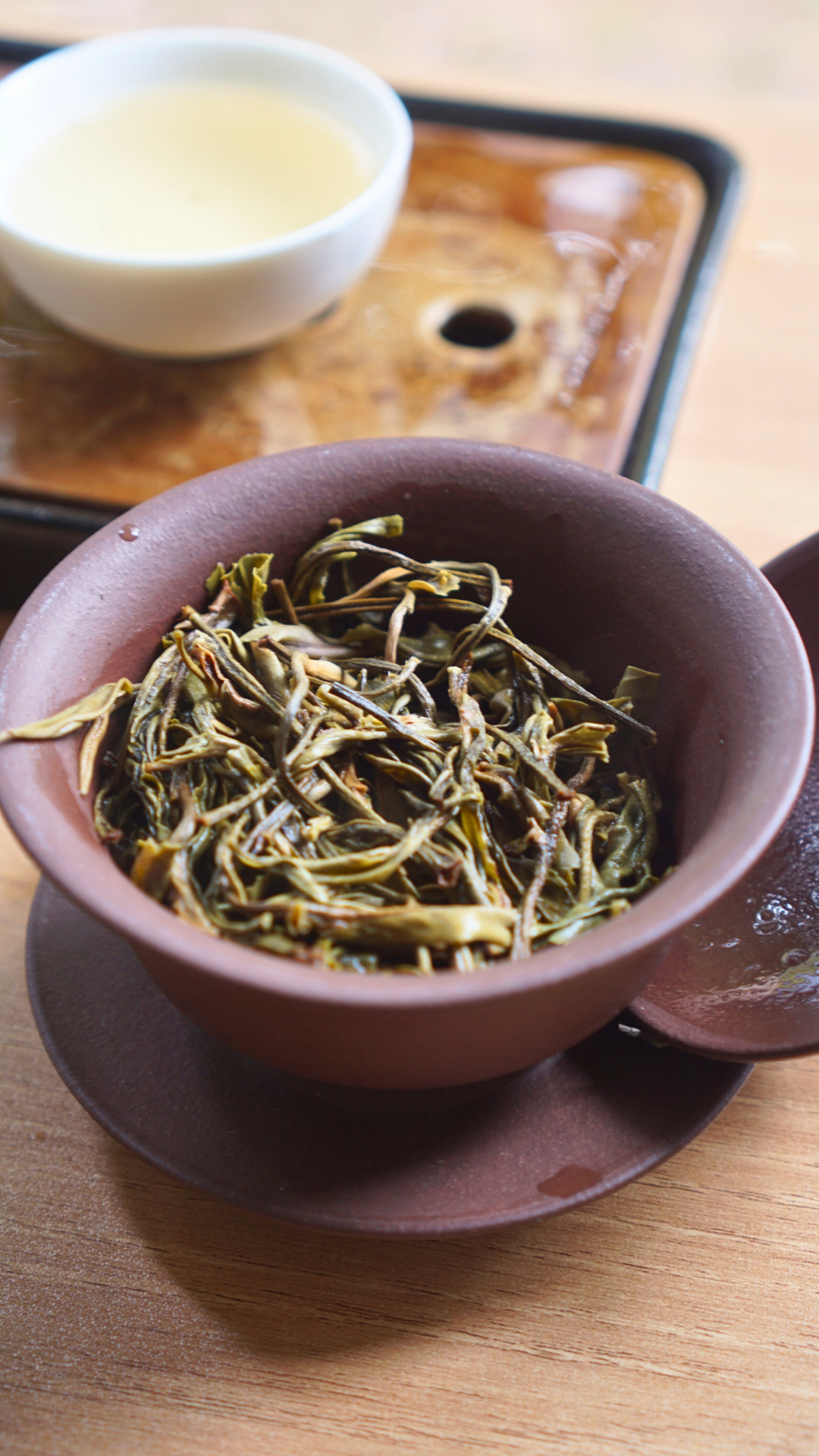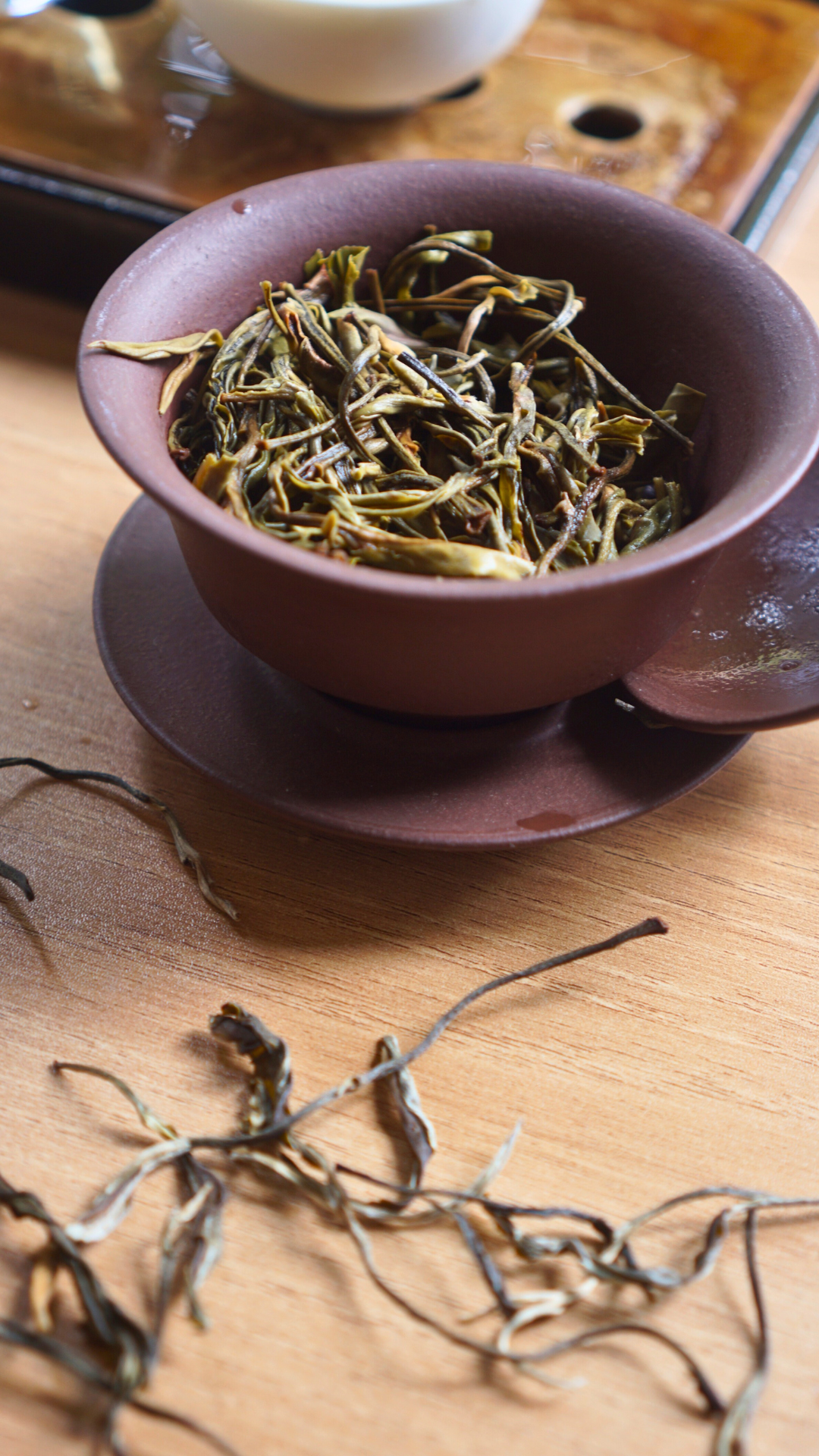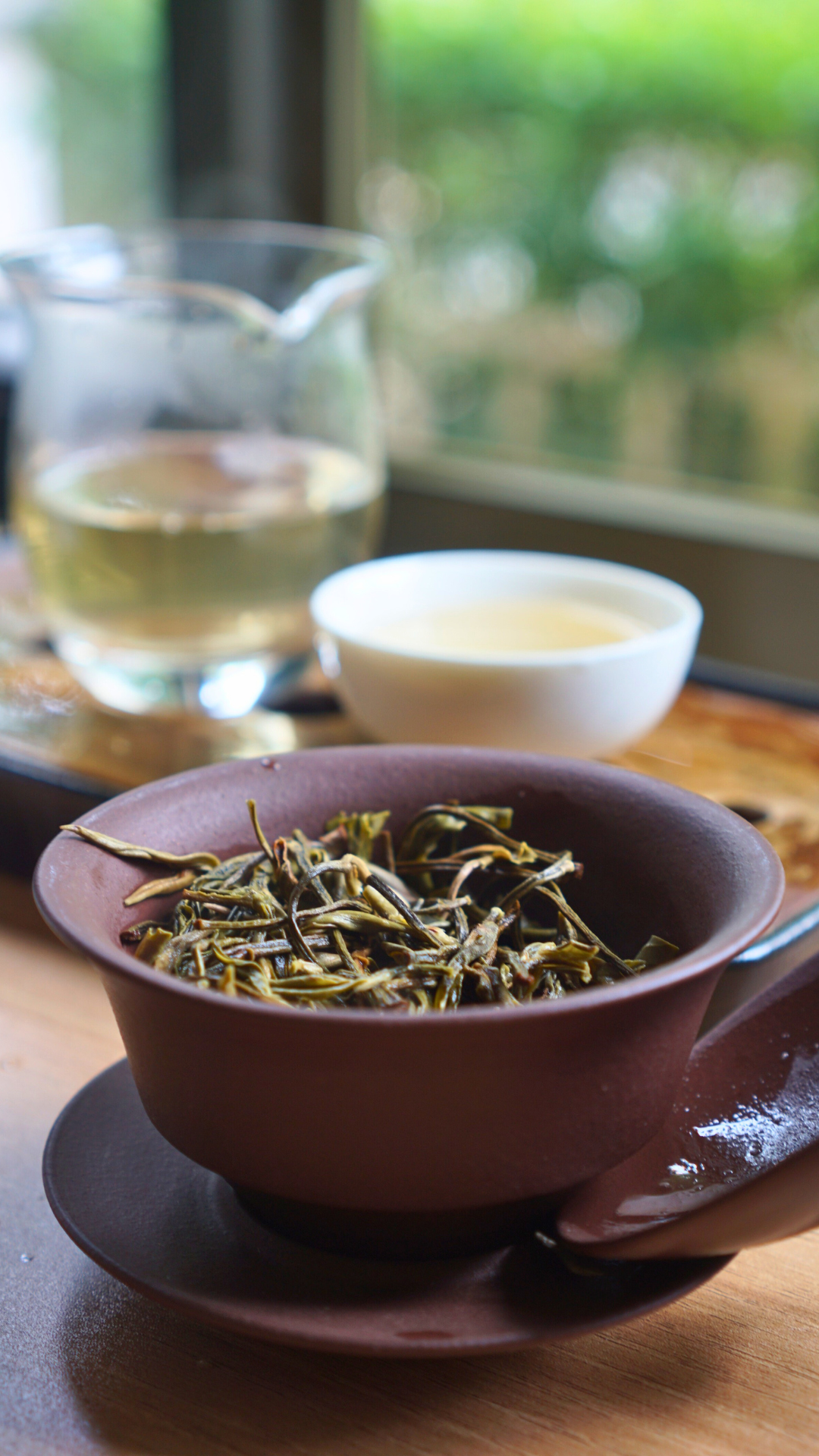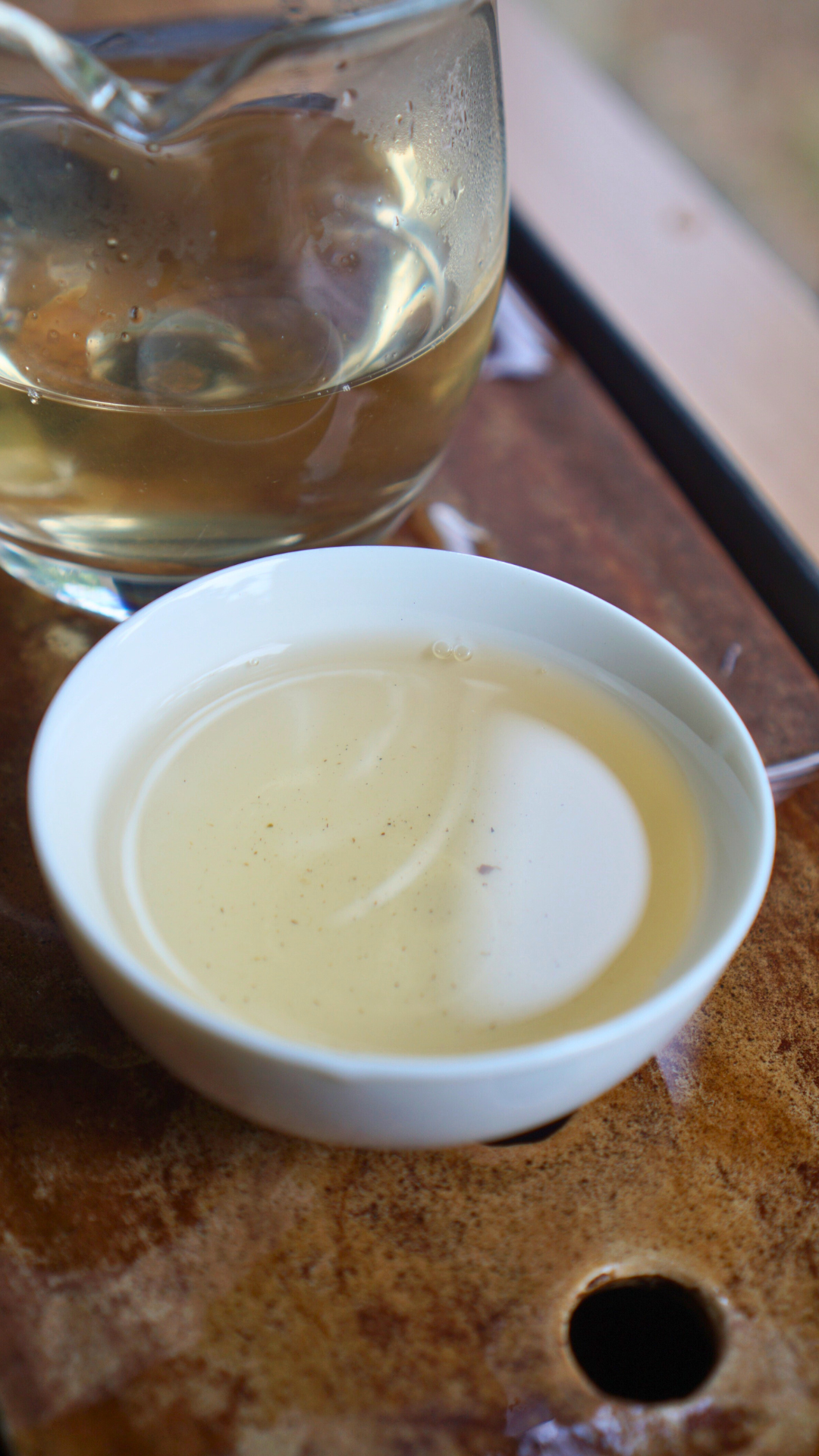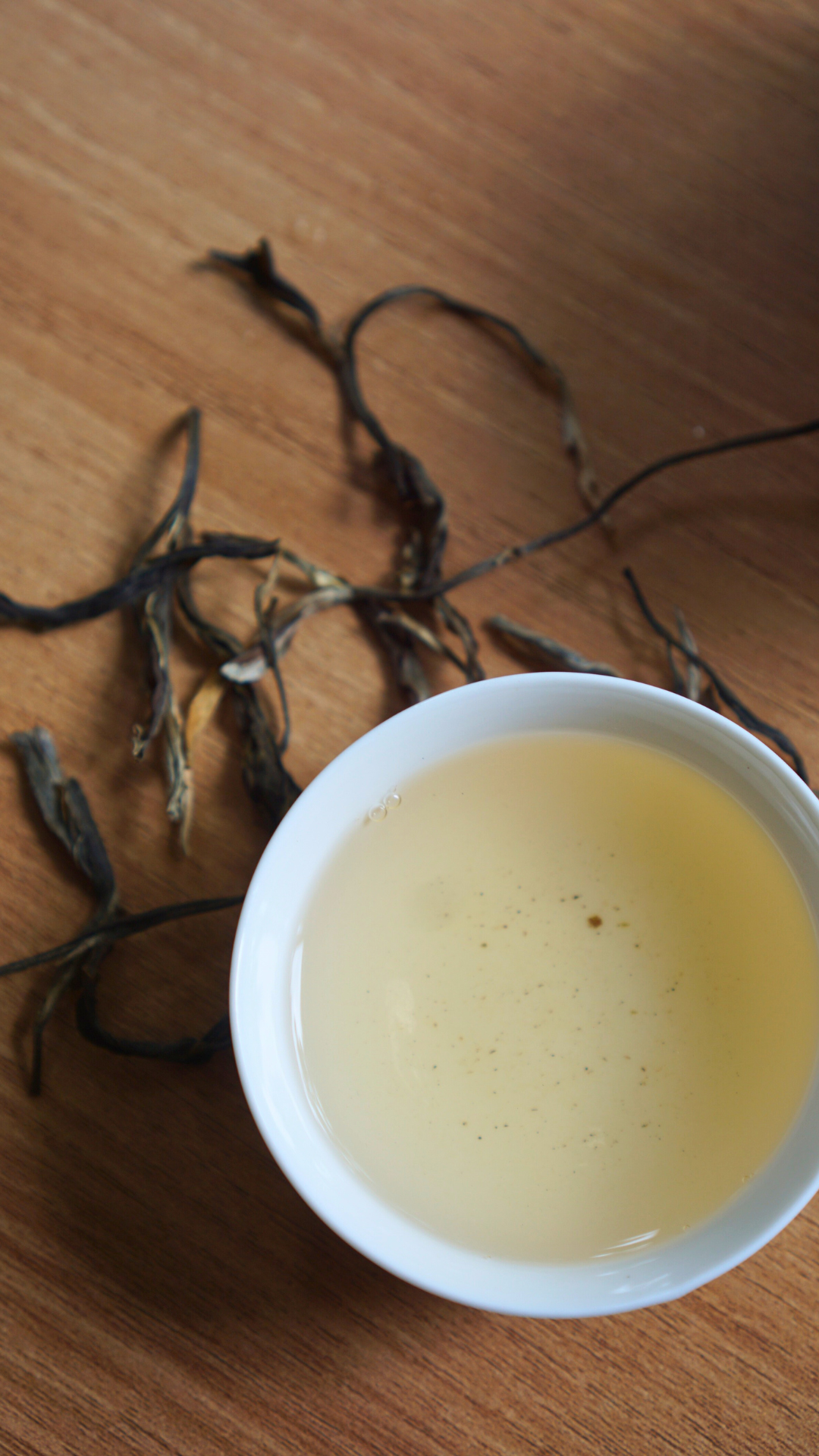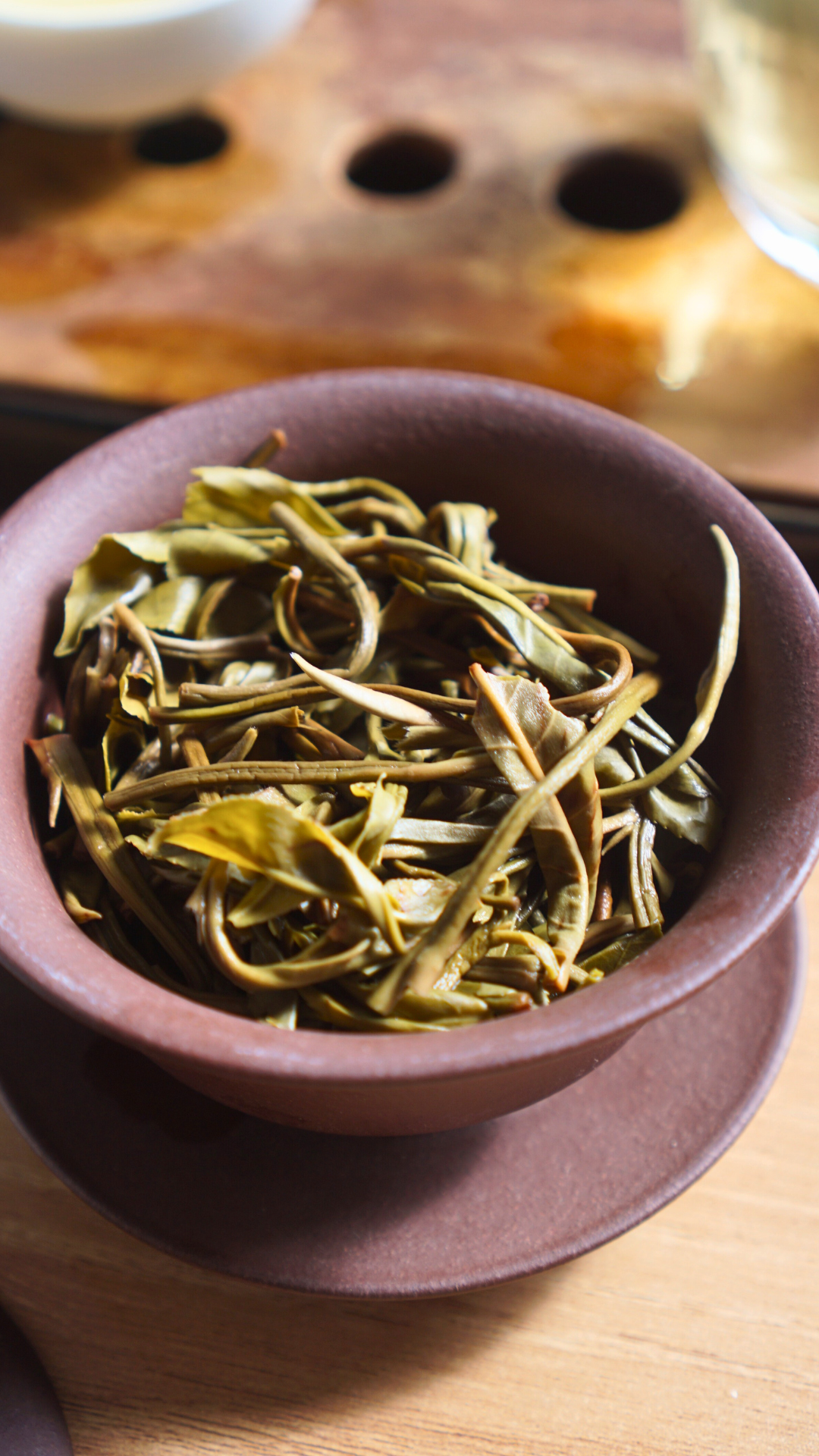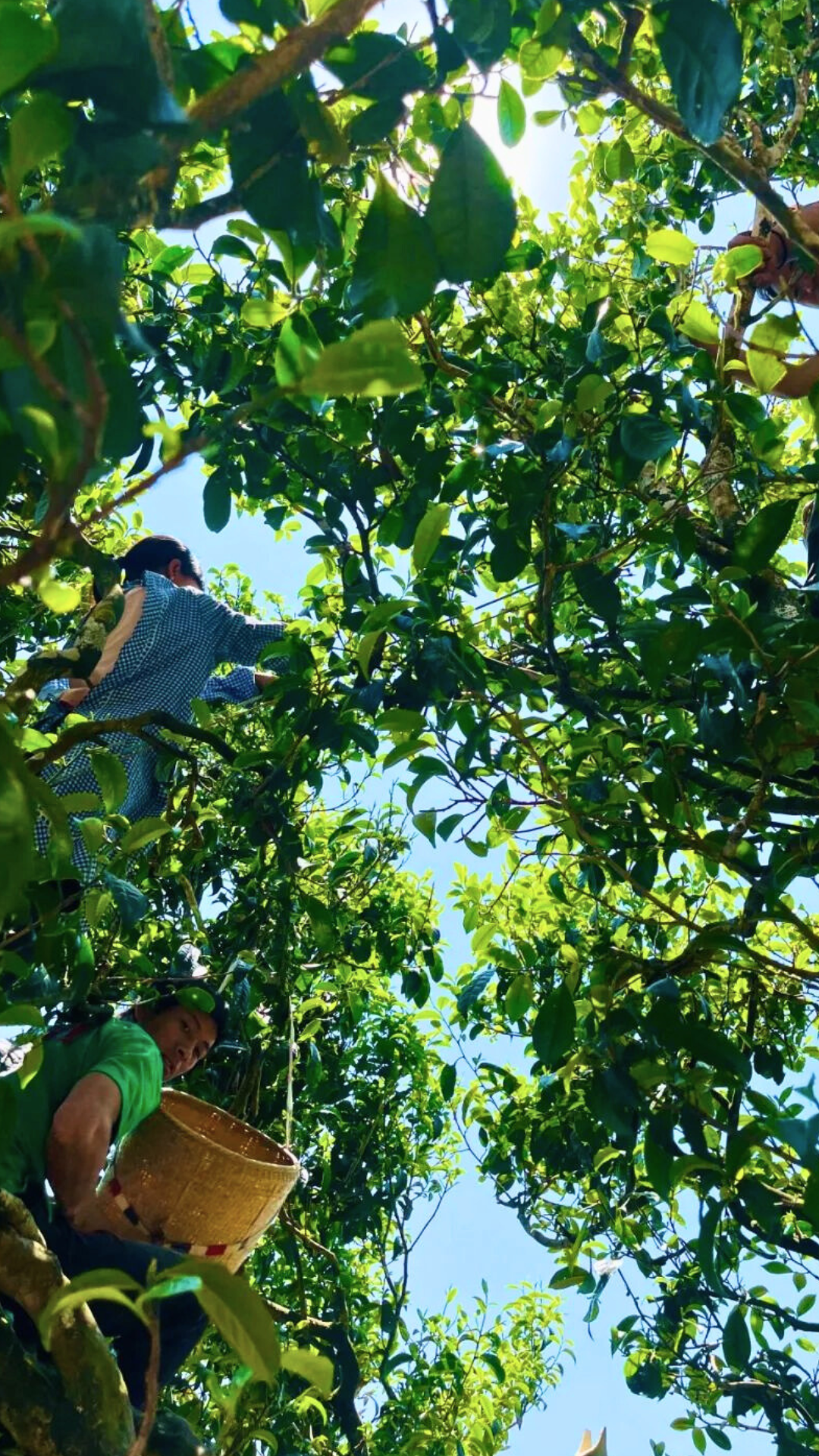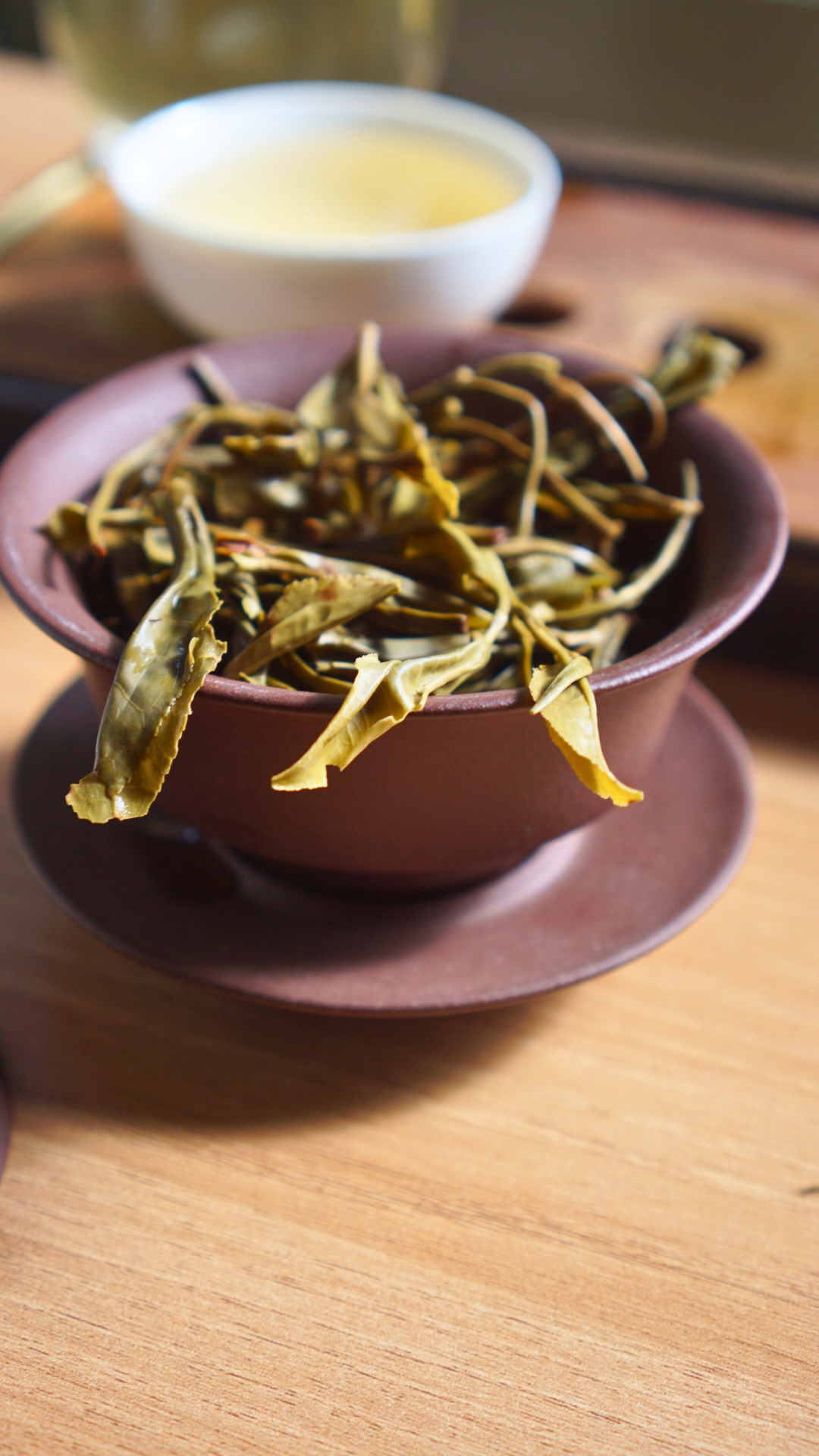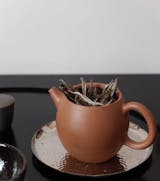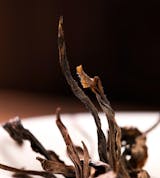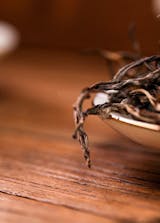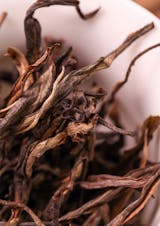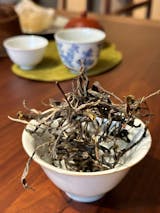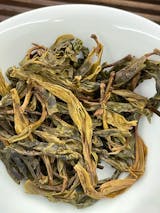Bing Dao Ancient Tea Garden Raw Pu-erh
Bing Dao Ancient Tea Garden Raw Pu-erh
冰岛古茶园普洱生茶
Bing Dao(冰岛), as tea enthusiasts who love Pu-erh tea might know, is considered the pinnacle of Pu-erh tea production in Lincang(临沧). In a narrow sense, Bing Dao typically refers to the Bing Dao Lao Zhai(冰岛老寨), which is also the core production area. In a broader sense, Bing Dao refers to the "Five Bing Dao Villages," including the Bing Dao Lao Zhai(冰岛老寨), Dijie(地界), Nanpo(南迫), Nuowu(糯伍), and Bawai(坝歪). Collectively, they are called the Bing Dao tea region.
The Bing Dao tea region boasts many well-known mountains, including the "Five Bing Dao Villages" mentioned earlier: Bing Dao Lao Zhai(冰岛老寨), Dijie(地界), Nanpo(南迫), Nuowu(糯伍), and Bawai(坝歪). Additionally, XiaoHuZhai(小户寨), Molie(磨烈), DaZhongShan(大忠山), and ZhengQiTang(正气塘) also belong to the Bing Dao tea region.
In the past, Bing Dao Lake(冰岛湖) was not called Bing Dao Lake but was known as Nandeng Reservoir(南等水库). The name change came after Bing Dao tea gained widespread recognition among tea enthusiasts, and it was renamed "Bing Dao Lake."
Bing Dao Lake plays a critical role in regulating the climate and supporting the growth of tea trees throughout the Bing Dao tea region. Just as the Lancang River(澜沧江) nourishes Xi Gui(昔归), and the NaDaMeng Reservoir(那达勐水库) nourishes Lao Ban Zhang(老班章), Bing Dao Lake(冰岛湖) nourishes Bing Dao(冰岛).
The excellent taste and popularity of Bing Dao tea are closely tied to the variety of tea plants and the role of its unique micro-ecological environment. The primary variety is the Mengku large-leaf species(勐库大叶种), which has a significant advantage in water-soluble content compared to other tea tree varieties.
Mengku large-leaf tea has a water-soluble content of up to 52.1%. This water-soluble content determines the richness and intensity of the tea soup, reflecting the quality of the tea to a certain extent. As a result, raw Pu-erh tea made from Mengku large-leaf materials has a fresh, rich, and impactful taste and is more resistant to steeping than raw Pu-erh made from other varieties.
The "Five Bing Dao Villages" are divided into eastern and western regions by Bing Dao Lake. The moist water vapor makes the air in the "Five Bing Dao Villages" more humid than in other parts of Mengku(勐库). The temperature in this area is also moderated by Bing Dao Lake, providing abundant moisture and suitable temperatures. Combined with weaker sunlight, the nitrogen metabolism in the tea trees is enhanced, leading to increased accumulation of theanine, which manifests in a distinctly enhanced freshness in taste.
Our Bing Dao Ancient Tea Garden Pu-erh is harvested from an ancient tea garden at an altitude of about 1,900 meters, an area rarely visited by people. According to historical records, this tea grove has been cultivated since the Ming Dynasty, and Bing Dao Lake nourishes this soil. The area is enveloped in clouds and mist year-round, with an extremely stable climate. As a result, most ancient Mengku large-leaf tea trees in this area are over a hundred years old, and each tree grows to about 4 meters in height. The forest is filled with the fragrance of a pristine ecosystem. In the tea grove, goat milk fruit trees(羊奶果树) grow alongside tea trees, blending harmoniously. This enhances the floral and fruity aroma of our tea.
This tea is an early spring first-harvest tea, and we exclusively pick spring tea. Because this tea garden is so remote and the roads are difficult to traverse, the process of harvesting requires slashing paths through the dense jungle while advancing. The challenging harvesting conditions make it extremely difficult. Annually, this tea garden produces only about 300 kilograms of dried tea, making it exceptionally rare. Of course, picking only once during the early spring also helps protect these ancient tea trees from over-harvesting, allowing for three seasons each year to rest and nourish new buds.
The main characteristics of this Bing Dao Ancient Tea Garden Pu-erh are as follows:
Fresh Leaves: Typical Mengku large-leaf tea, with leaves that are thick, tender, and soft. The buds are covered with abundant silvery hairs.
Dried Tea: The strips are distinct, bright, thick, and sturdy, with exposed tea hairs.
Tea Soup Color: Bright orange-yellow, clear, and free of impurities.
Aroma: Strong floral and fruity fragrance that lingers. After brewing, the floral and fruity aroma remains fragrant in both the teapot and the teacup.
Taste: The rock sugar sweetness is prominent, the tea soup is smooth and rich, bitterness and astringency are low, while the aftertaste is strong and lingering with salivation. The tea leaves also produce a deep throat sensation and a robust tea energy.
Brewed Leaves: Thick, tender, uniformly yellow-green, soft, and resilient.
The abundant nutrients in this exceptional environment and the thriving ancient tea trees result in a rich content of substances in this Bing Dao Ancient Tea Garden Pu-erh. The dried tea is intensely aromatic with floral and fruity notes, the tea soup is fine and mellow, bitterness and astringency are relatively low, and the aftertaste is quick and long-lasting. It truly lives up to its name as "Bing Dao Sweet."
After aging for another 2-3 years, the tea’s characteristics will mellow further, becoming smoother, richer, and sweeter. The signature "Bing Dao Charm" will be even more prominent.
⚠️ Avoid drinking this tea on an empty stomach, as it may cause “tea drunkenness” and be too stimulating for the stomach, especially sensitive ones. It’s recommended to pair the tea with some snacks.
📝 Check out this link to read my thoughts on tasting this Bing Dao ancient tea garden raw Pu-erh.
Picking and Processing
Picking and Processing
Raw Pu'er tea is made from fresh leaves of the Yunnan large-leaf tea trees that grow in the environment conditions suitable for Pu'er tea production. It is processed into sun-dried green tea through processes like fixing (sha qing), rolling, and sun-drying, or further steamed and pressed into compressed tea. Its quality characteristics are: dark green appearance, clean and lasting aroma, rich taste with a sweet aftertaste, green-yellow and bright liquor, and thick yellow-green infused leaves.
The processing steps for loose raw Pu'er tea that has not undergone compression are generally as follows:
Picking
Hand-picked with one bud and two or three leaves. The leaves are withered and spread out to cool in a ventilated, sunless, and dry area, placed on bamboo mats. The time depends on the moisture content of the fresh leaves and the temperature and humidity at the time, generally more than half an hour.
Fixing (Sha Qing)
High-temperature quick fixing removes grassy flavors, evaporates some water, and facilitates shaping during rolling.
Rolling
This can be done by machine or by hand. The tea leaf cell walls are broken, allowing the tea juices to dissolve easily into the tea liquor during brewing, improving extraction rates, and shaping the leaves into strips.
Sun-drying
The rolled tea leaves are naturally sun-dried under sunlight, preserving the organic compounds and active substances in the tea to the greatest extent. Sun-dried green tea retains the essence and original flavor of the tea leaves.
The following are the subsequent processing steps for compressed raw Pu'er tea (e.g., tea cakes, Tuocha, etc.):
Molding
The sun-dried raw tea undergoes refinement processes such as sifting and cutting to create raw materials for various forms of compressed tea.
Higher-grade young leaves are not used for compressed tea. Generally, grades 1–3 are sold as loose tea, grades 5–9 are pressed into cakes, and grades below 9 are made into brick tea.
Steaming and Pressing
The prepared tea materials are softened with steam, then pressed into different shapes using various molds.
Drying
Dried in drying rooms at low temperatures. Generally, Pu'er tea requires a moisture content of less than 10%.
Brewing
Brewing
Loose-leaf raw Pu-erh tea is mainly divided into two categories: new tea and aged tea, with aged tea generally consisting of mid-aged tea.
Sun-dried pu-erh loose-lef tea in the new tea stage, such as tea stored for about 1 to 4 years, is characterized by a prominent fragrance and a fresh, brisk taste in the tea liquor. Especially for new tea from the current year, some leaves may still have a slight raw taste, but this will diminish or disappear as it ages and transforms during storage.

When brewing new raw tea, it is recommended to use a gaiwan. Opt for one with a slightly larger capacity, such as around 150 milliliters, or use slightly fewer tea leaves. This allows the tea leaves more space to unfold, enabling the flavors of the tea liquor to be better infused.
The water temperature can be just-boiled water, allowed to sit for a few seconds before pouring. Pour water in using a steady high stream, which helps to better release the tea's fragrance. After pouring, for the first few brews, there is no need for steeping time—pour the water and decant it immediately. As the number of brews increases, you can slightly extend the steeping time, which helps achieve a more balanced flavor and taste in the tea liquor.
Throughout the brewing process, it's advisable to leave the lid slightly open, as the taste of new tea is primarily fresh and fragrant. Leaving the lid open prevents the tea leaves from becoming stewed, thereby enhancing the fragrance and flavor of the tea liquor.

For loose raw Pu-erh materials that have been aged for a slightly longer period, such as 5 to 8 years or more, the taste is markedly different from new tea. The aroma is predominantly honey-like, and the tea liquor has a richer and smoother taste.
To better showcase the honey fragrance and the rich, mellow flavor of the tea liquor, it is recommended to use a Yixing clay teapot for brewing. You can directly use boiling water to brew aged loose-leaf tea stored for about 5 to 8 years. Use a steady high pour to better enhance the fragrance of the tea liquor.
During the brewing process, leave the teapot lid slightly ajar at the spout to allow the tea leaves to breathe.
Raw Pu-erh Tea Storage
Raw Pu-erh Tea Storage
Storage Environment for Loose Leaf Raw Pu'er Tea:
Methods for Storing Loose Leaf Pu’er Tea:

First, clean the purple clay container thoroughly. Once the container is dry, you can store the loose-leaf Pu'er tea in it.
Note that although purple clay containers are excellent at blocking light and resisting moisture, it is still recommended to keep them away from light to avoid excessive heating due to sunlight. Additionally, due to the microporous nature of purple clay, care must be taken to ensure the storage environment is odor-free.

Choose cardboard boxes with adequate thickness and durability. First, pack the loose-leaf Pu'er tea in clean, food-grade plastic bags or aluminum foil bags, and then place them inside the cardboard box for storage.
Do not place cardboard boxes directly on the ground, as they can absorb moisture from the floor. It is best to place them on shelves or inside cabinets.
Avoid direct sunlight.
Do not store cardboard boxes in kitchens, dining areas, or other environments with complex odors.
Properly stored loose-leaf raw Pu'er tea can be preserved for ten years or even longer. The longer it is stored, the better its flavor will become, becoming smoother and richer over time.
- Loose Pu-erh Tea
- 500g/pouch
- Free Shipping
Couldn't load pickup availability
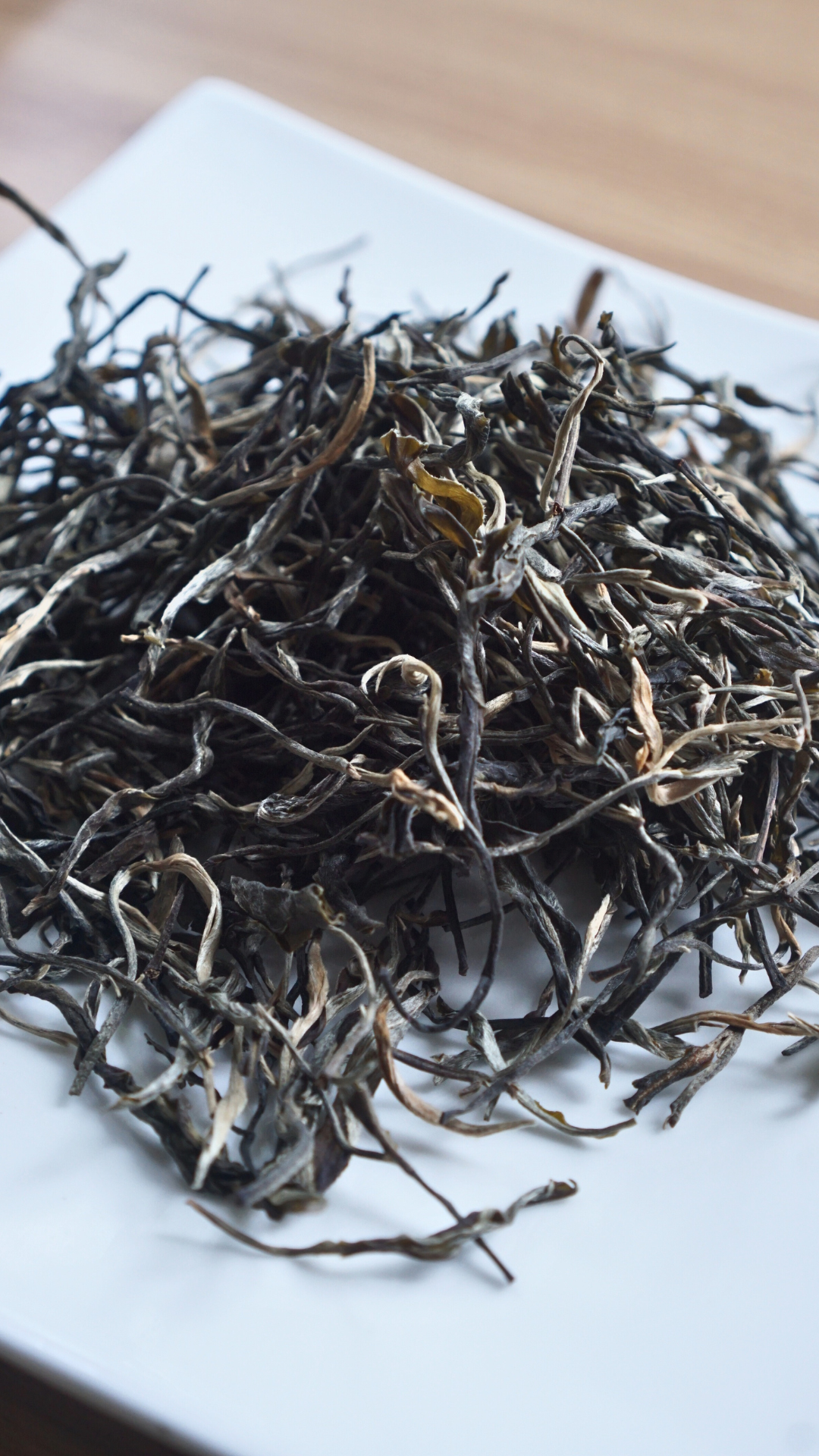
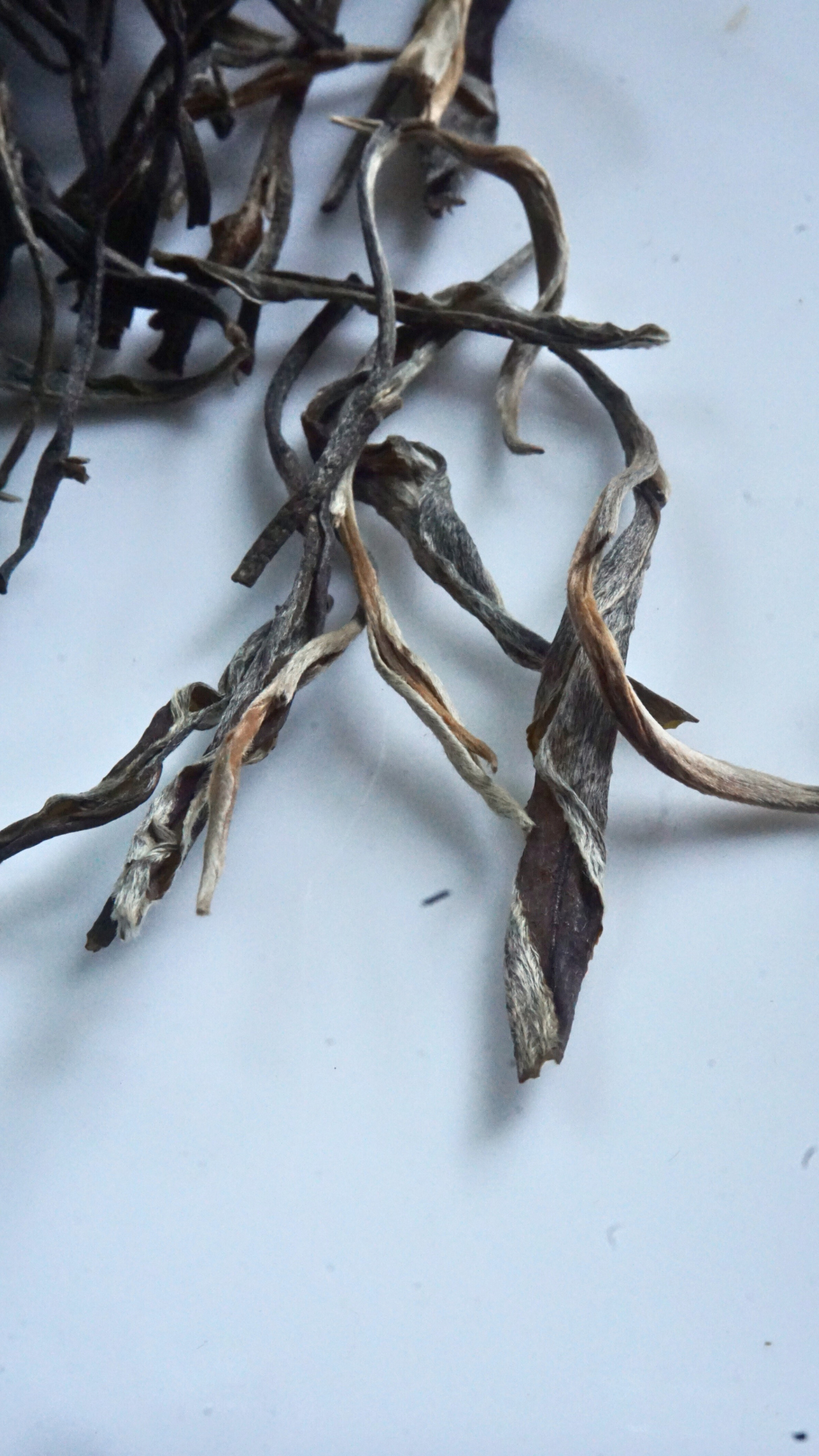
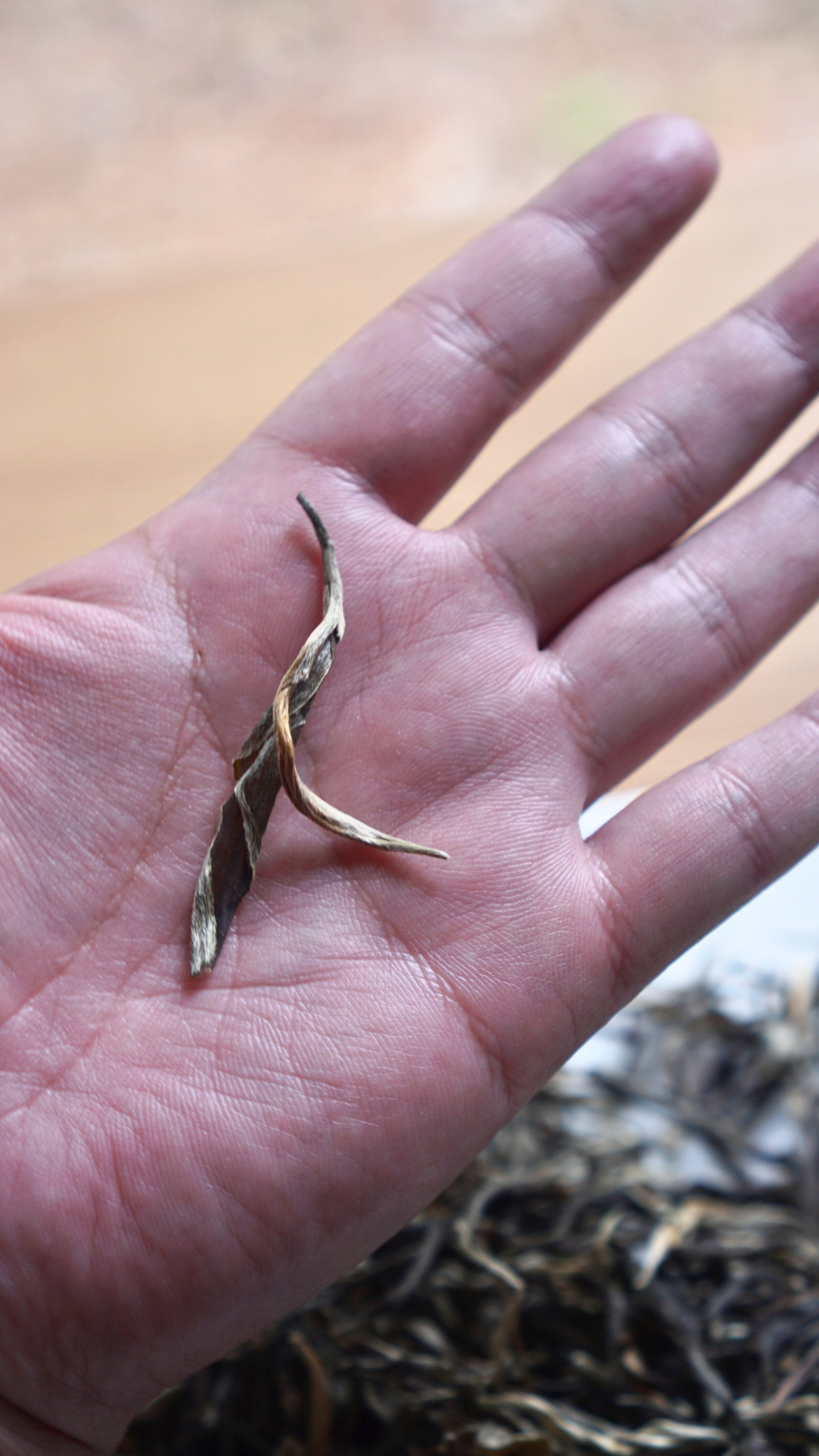
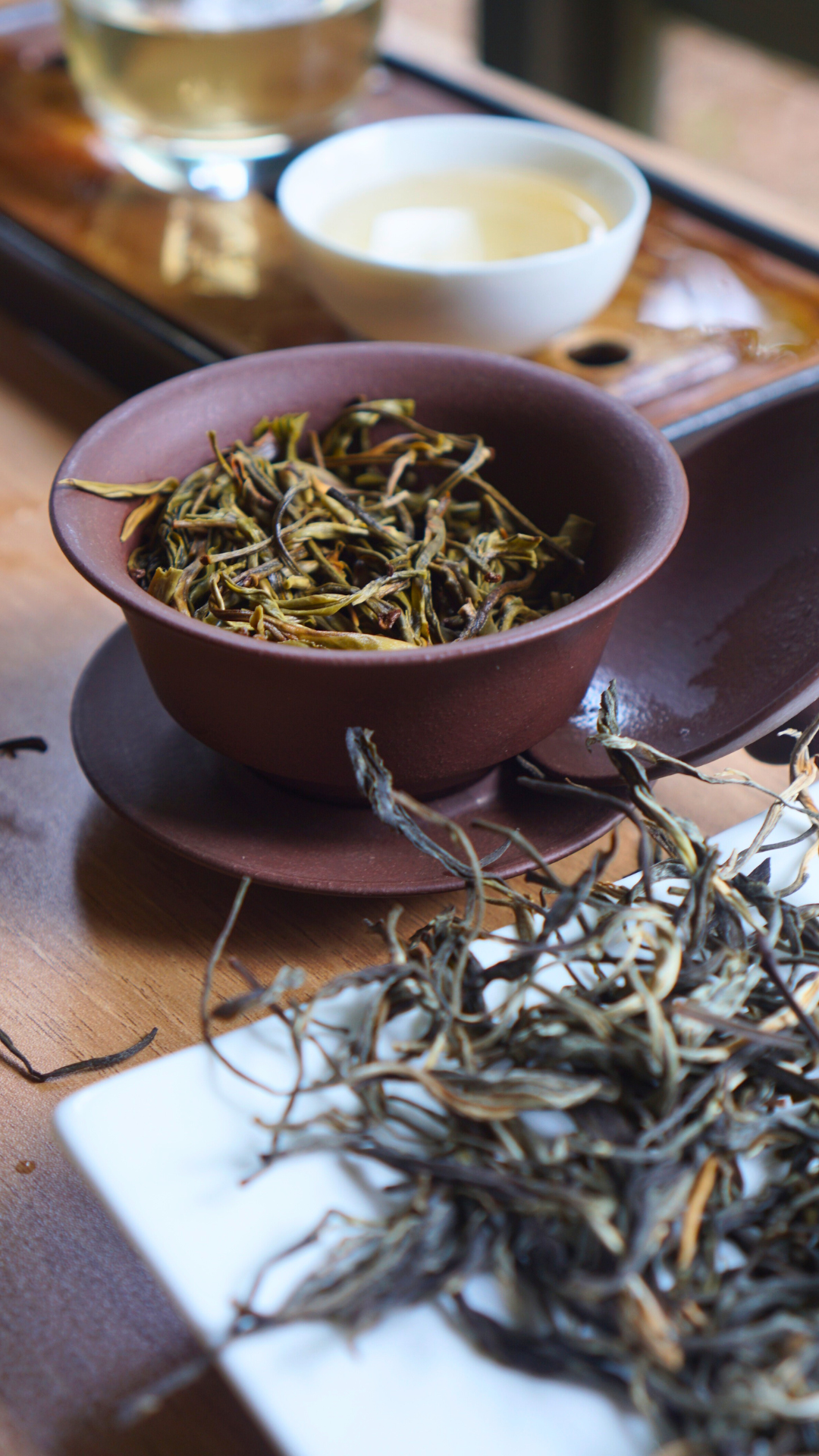
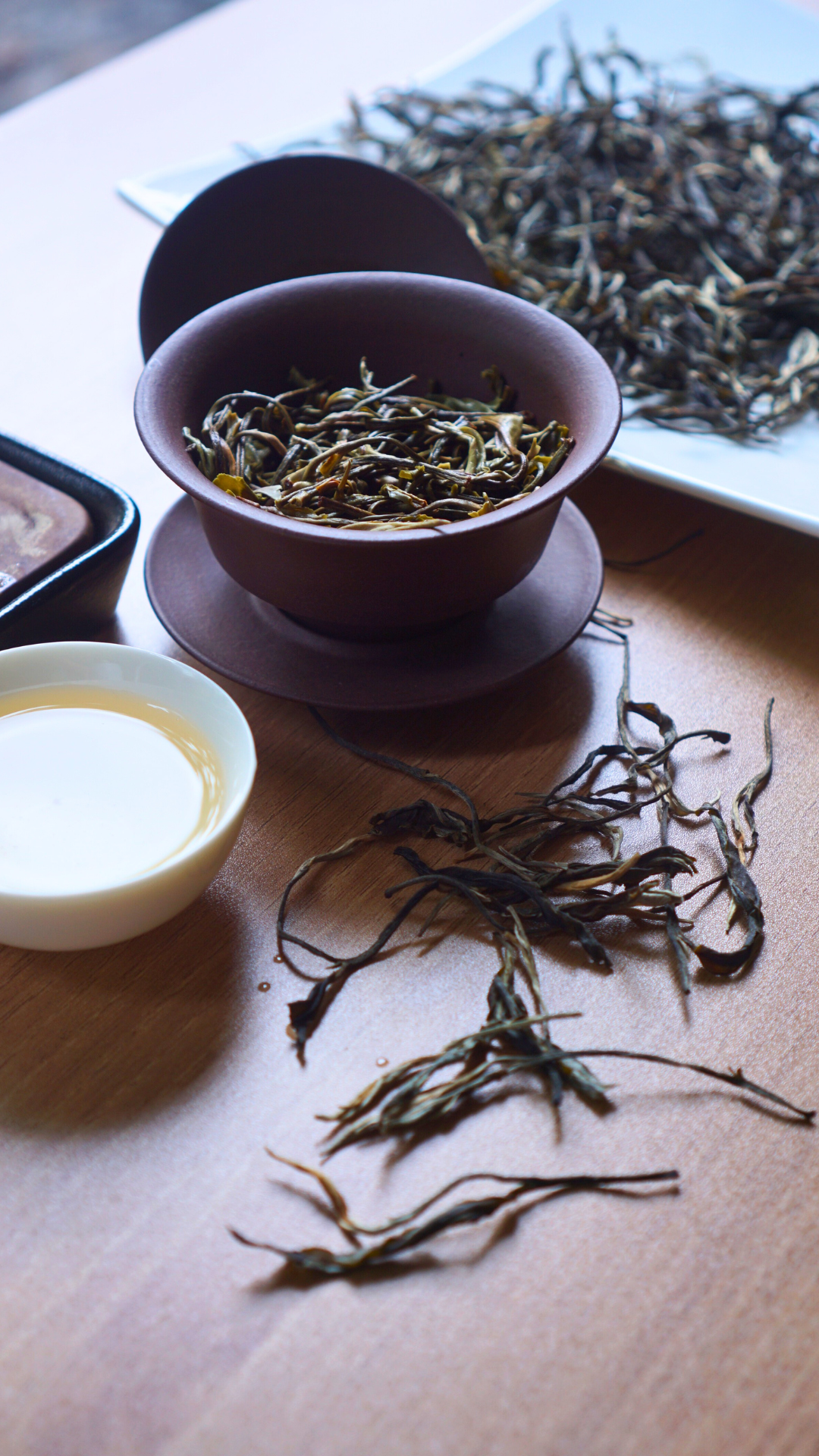
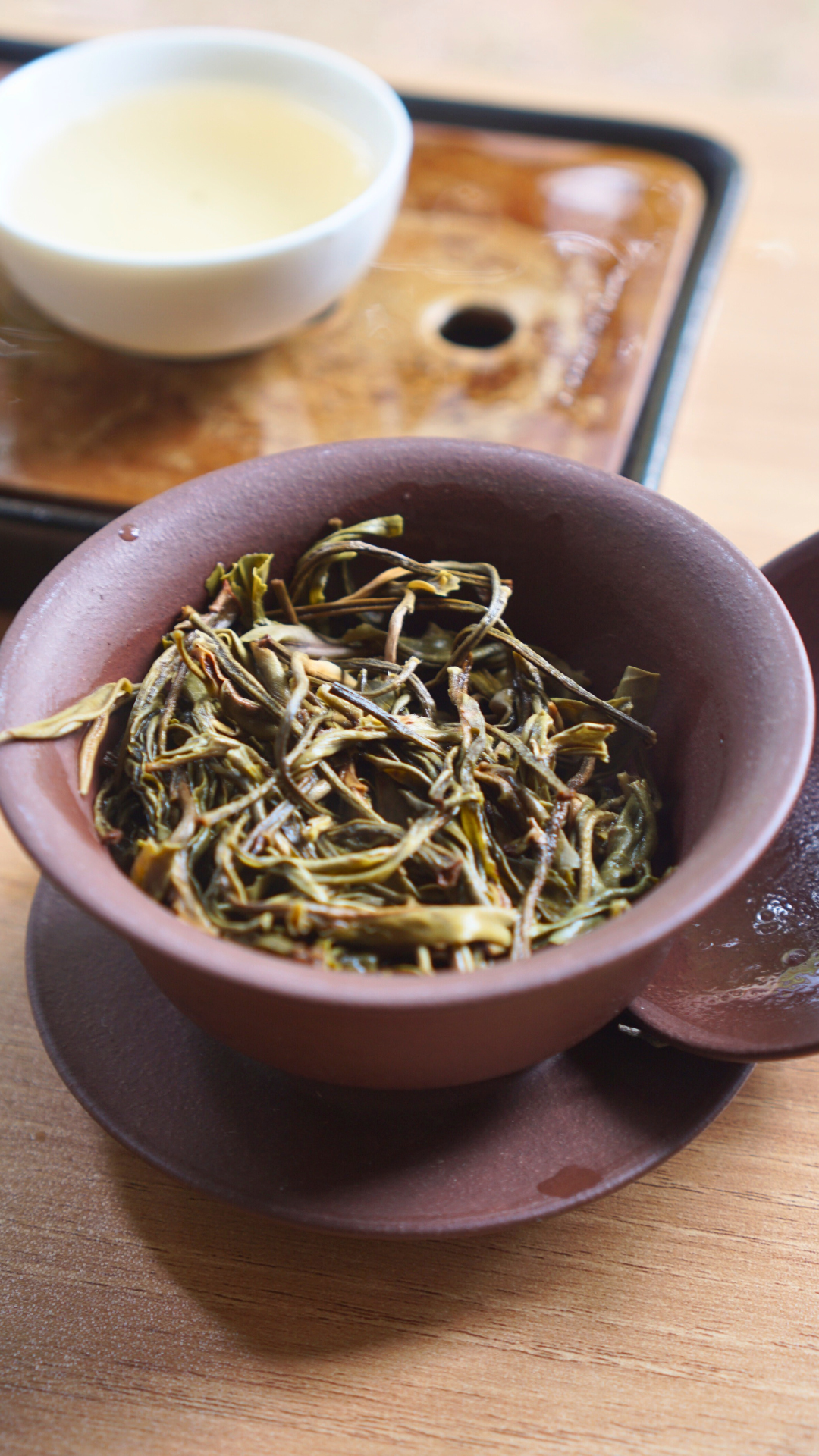
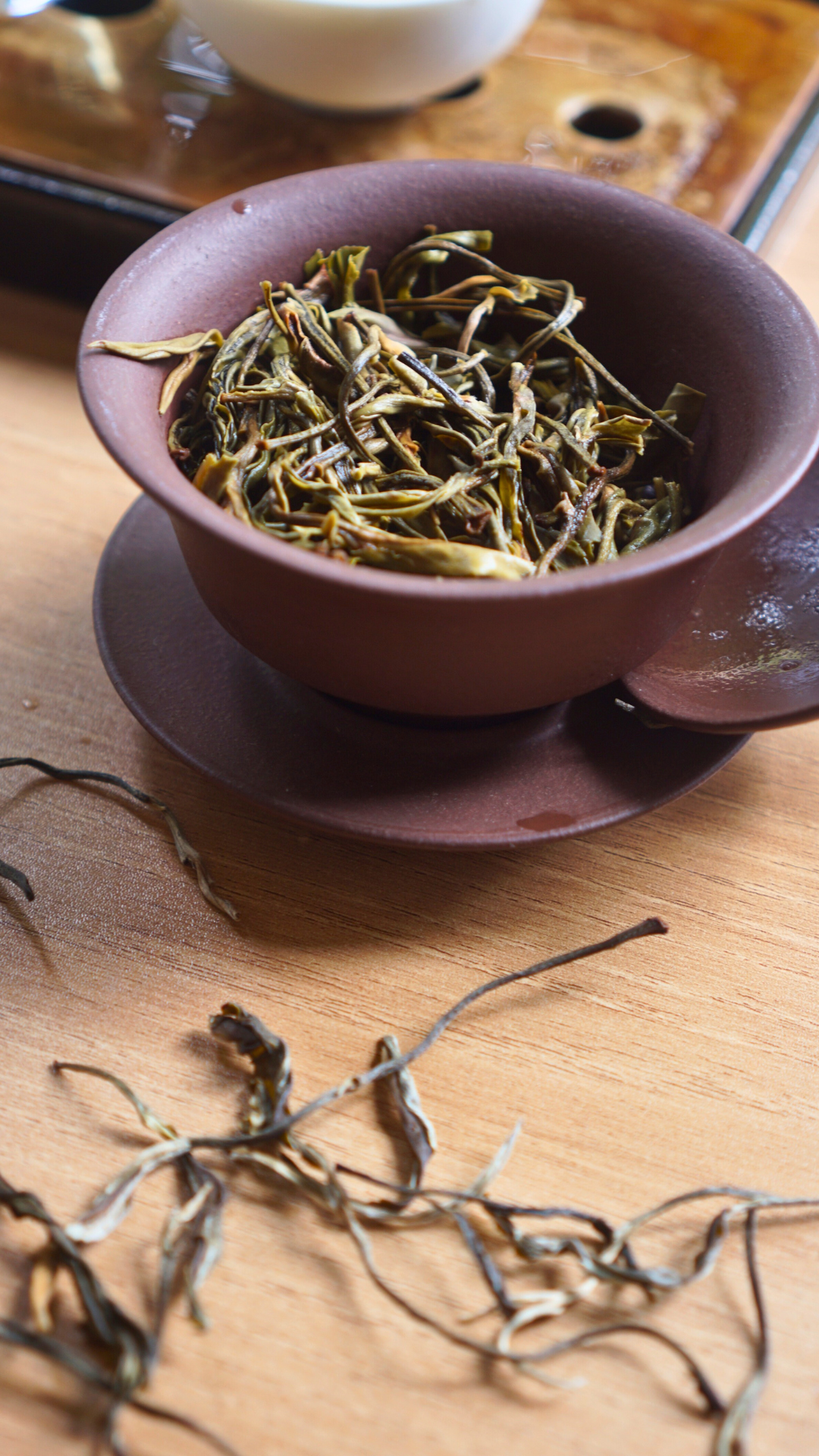
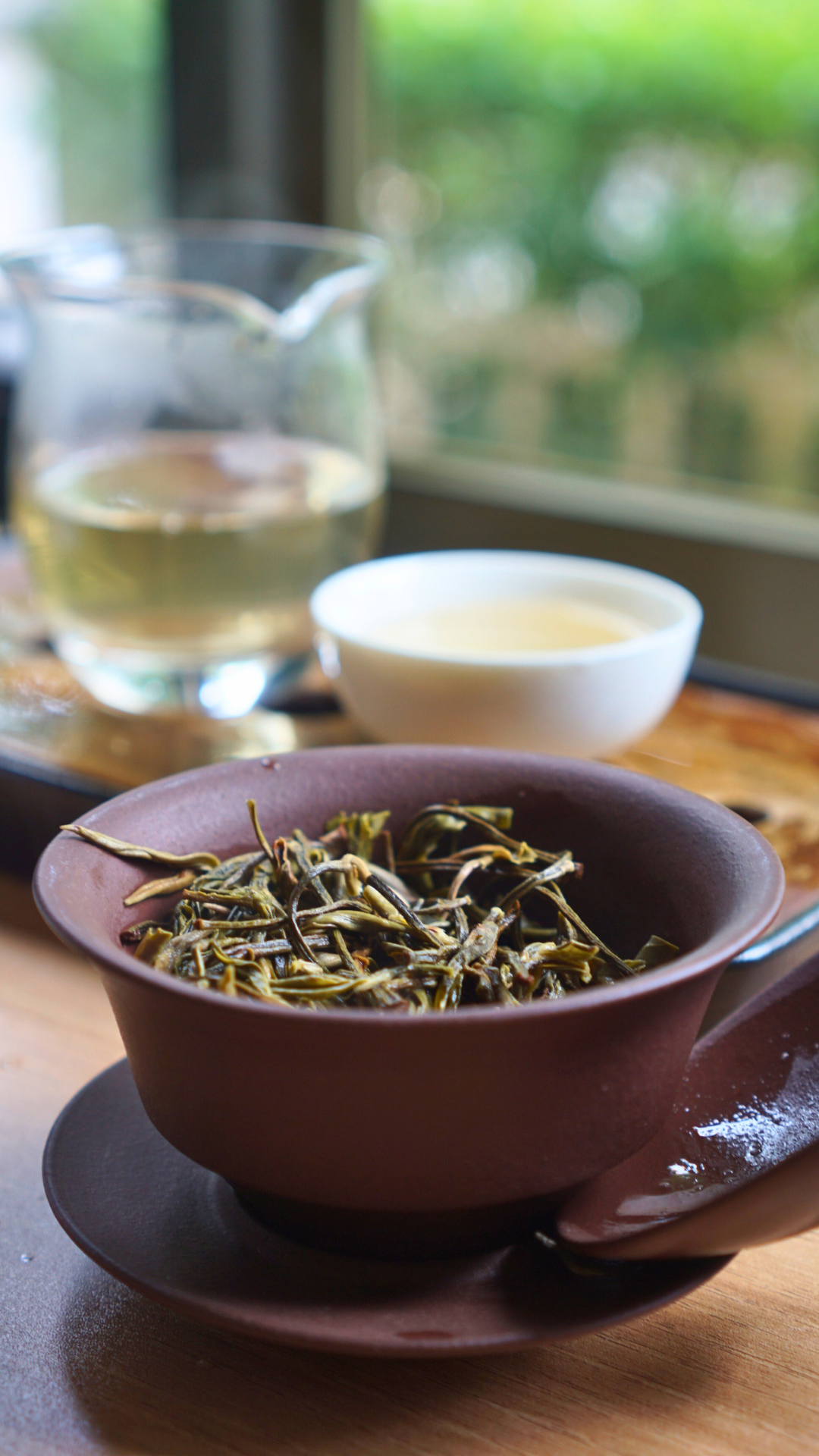
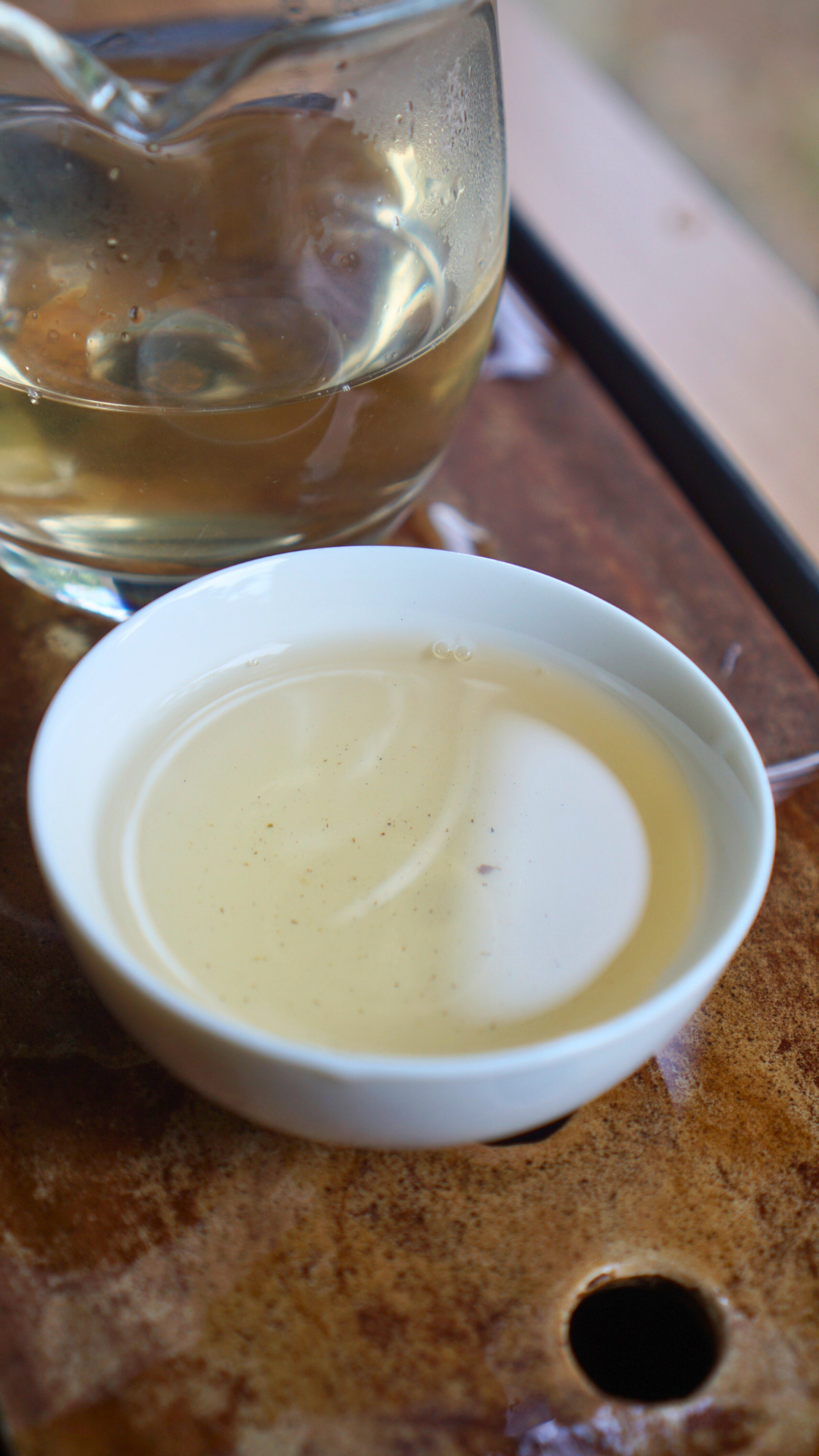
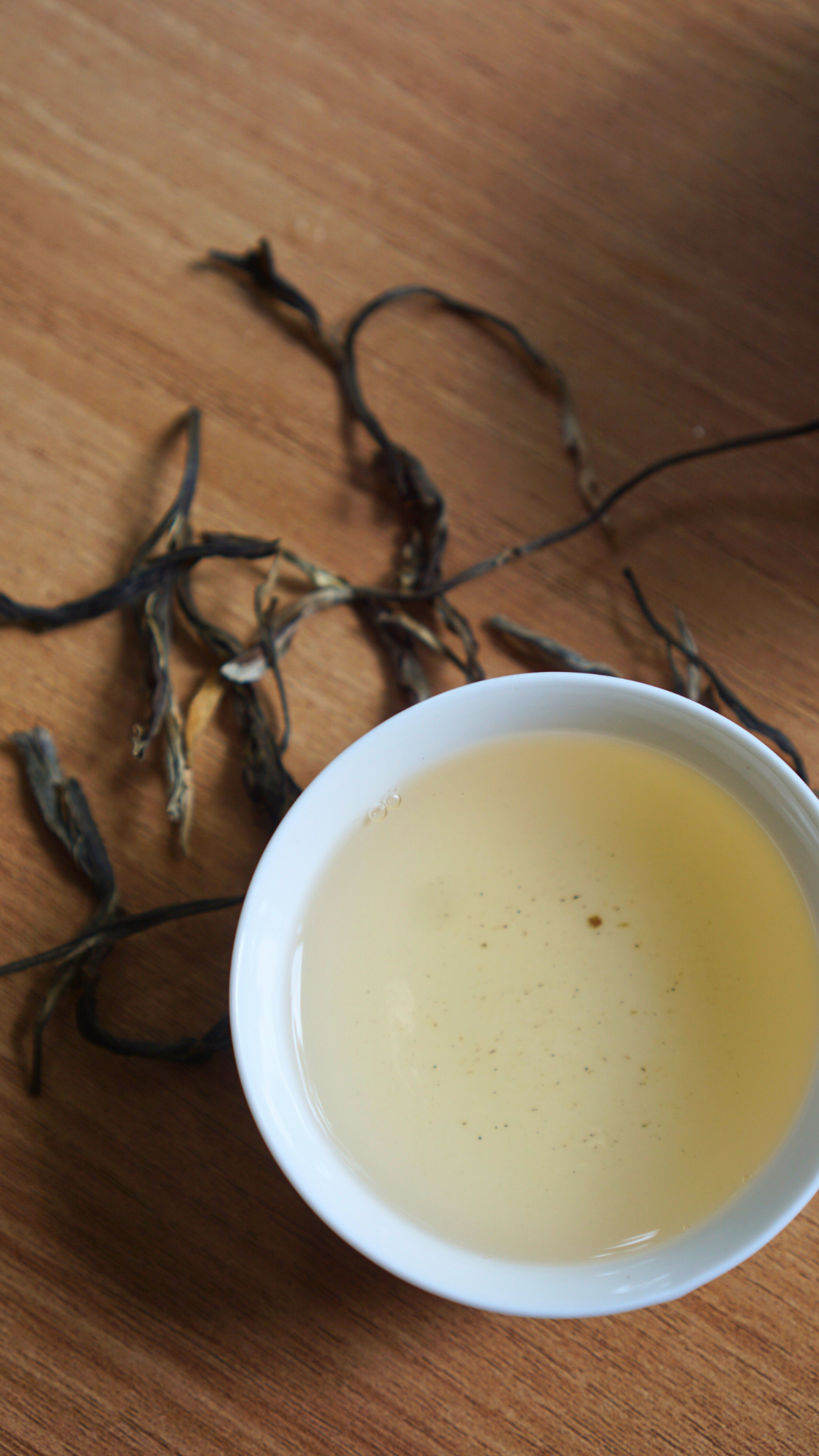
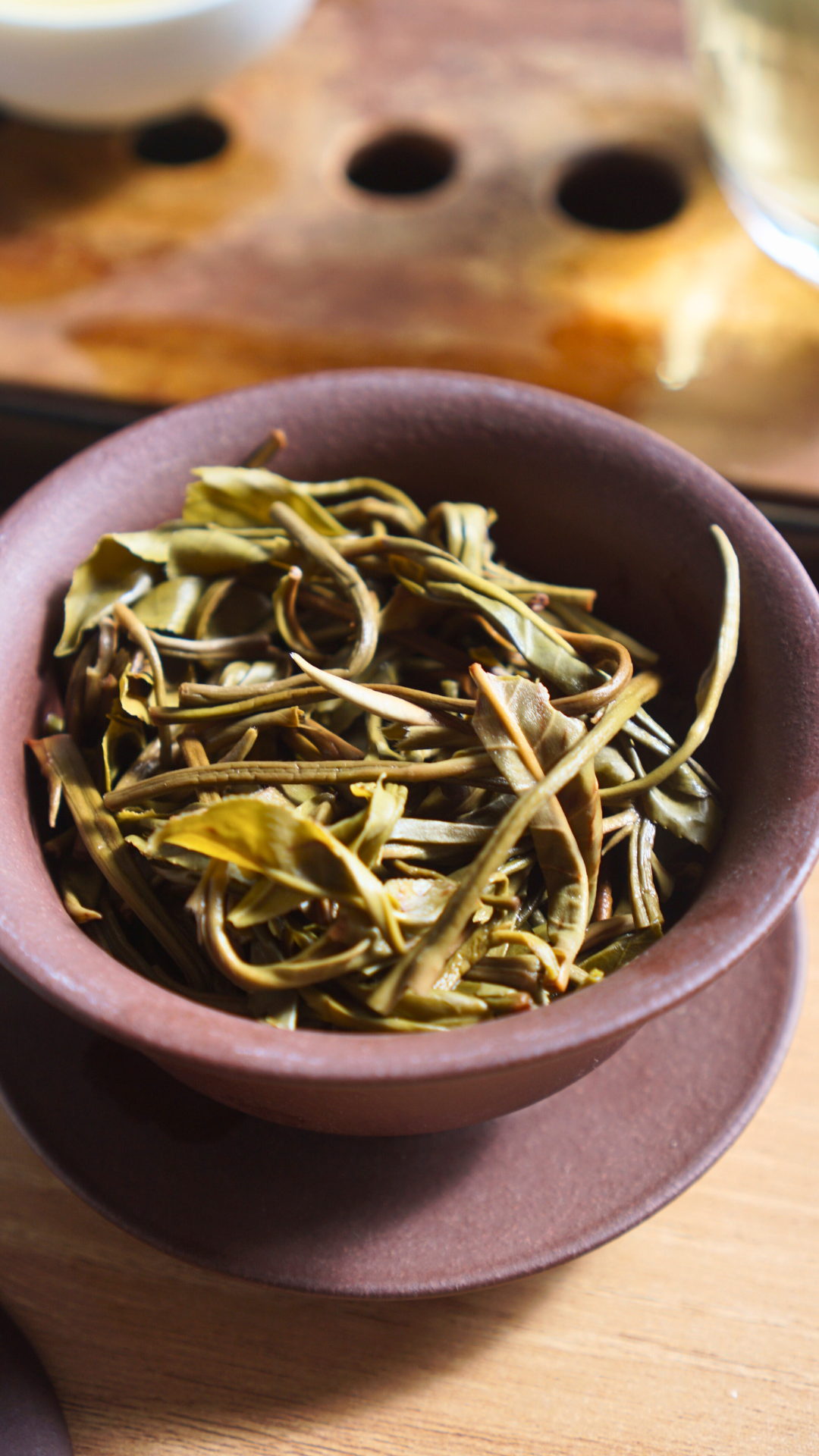
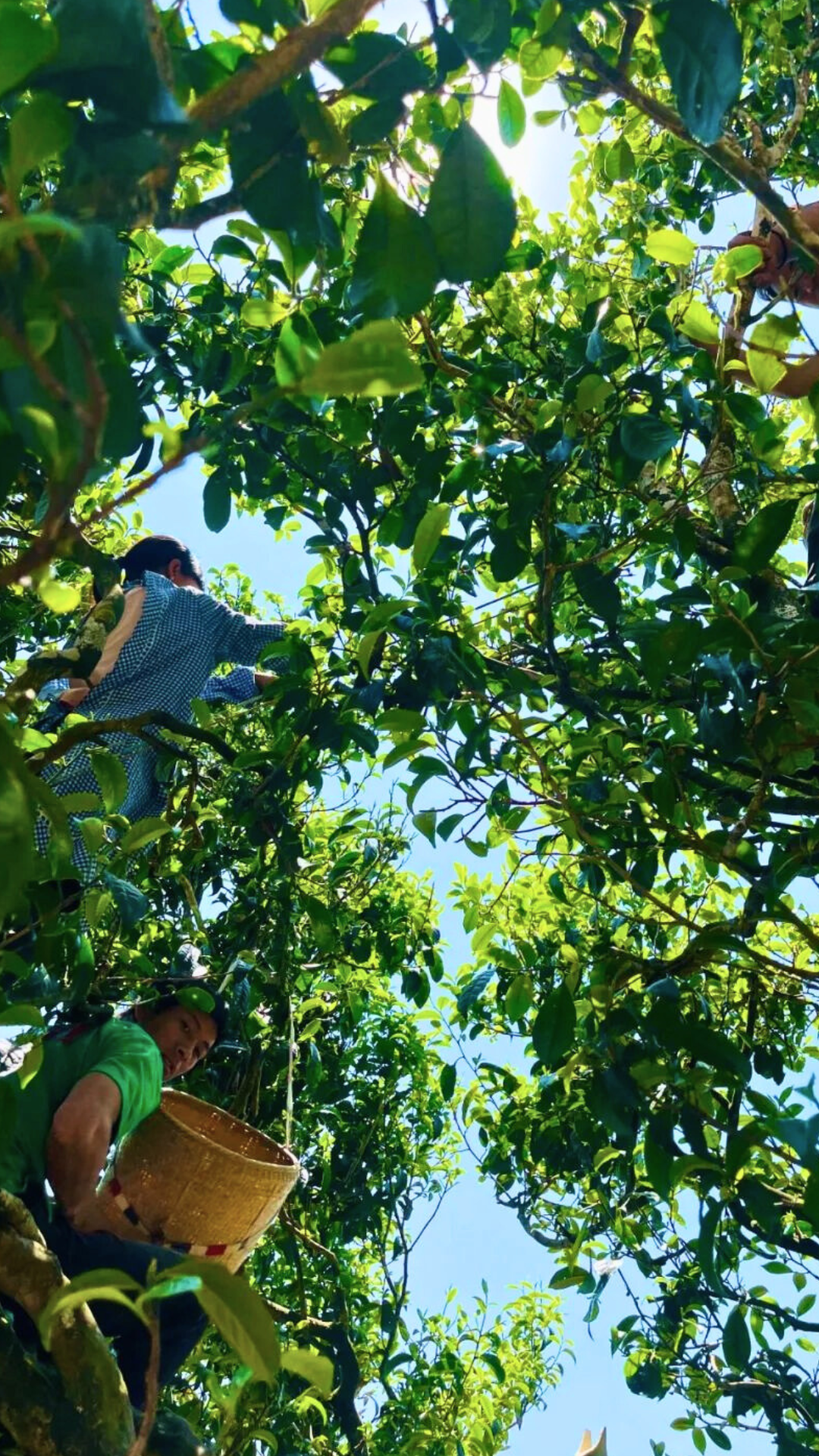
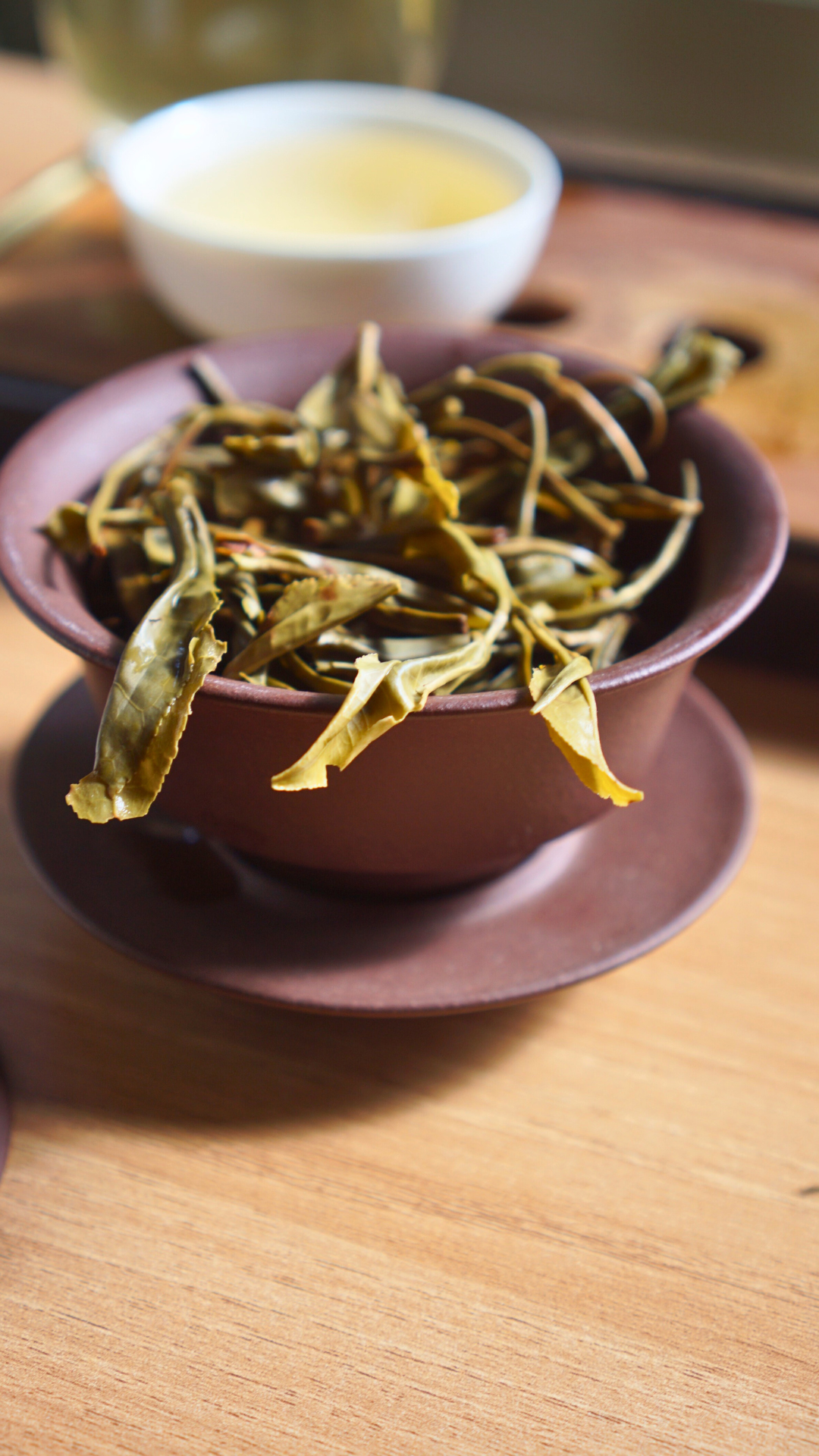
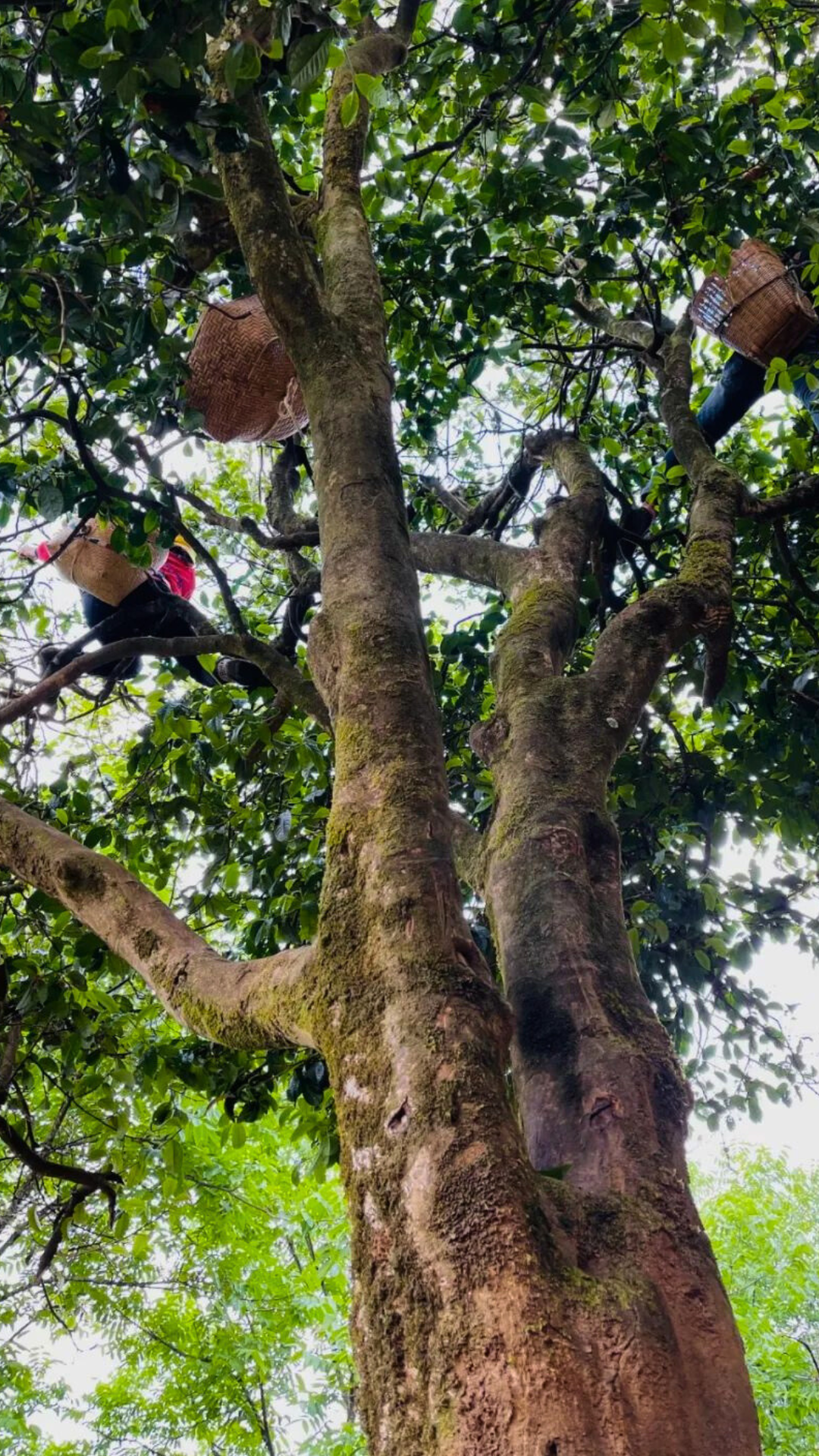
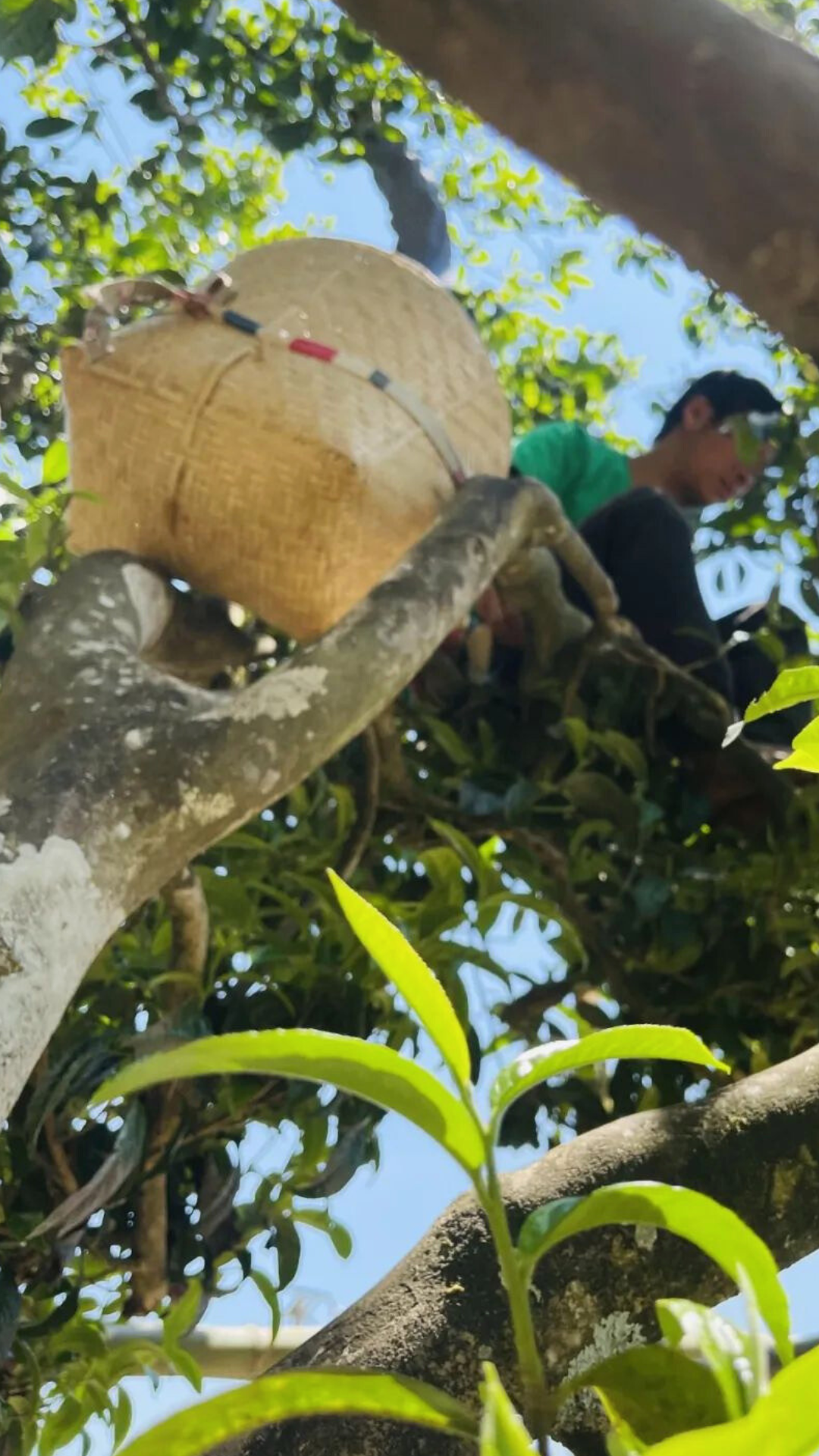
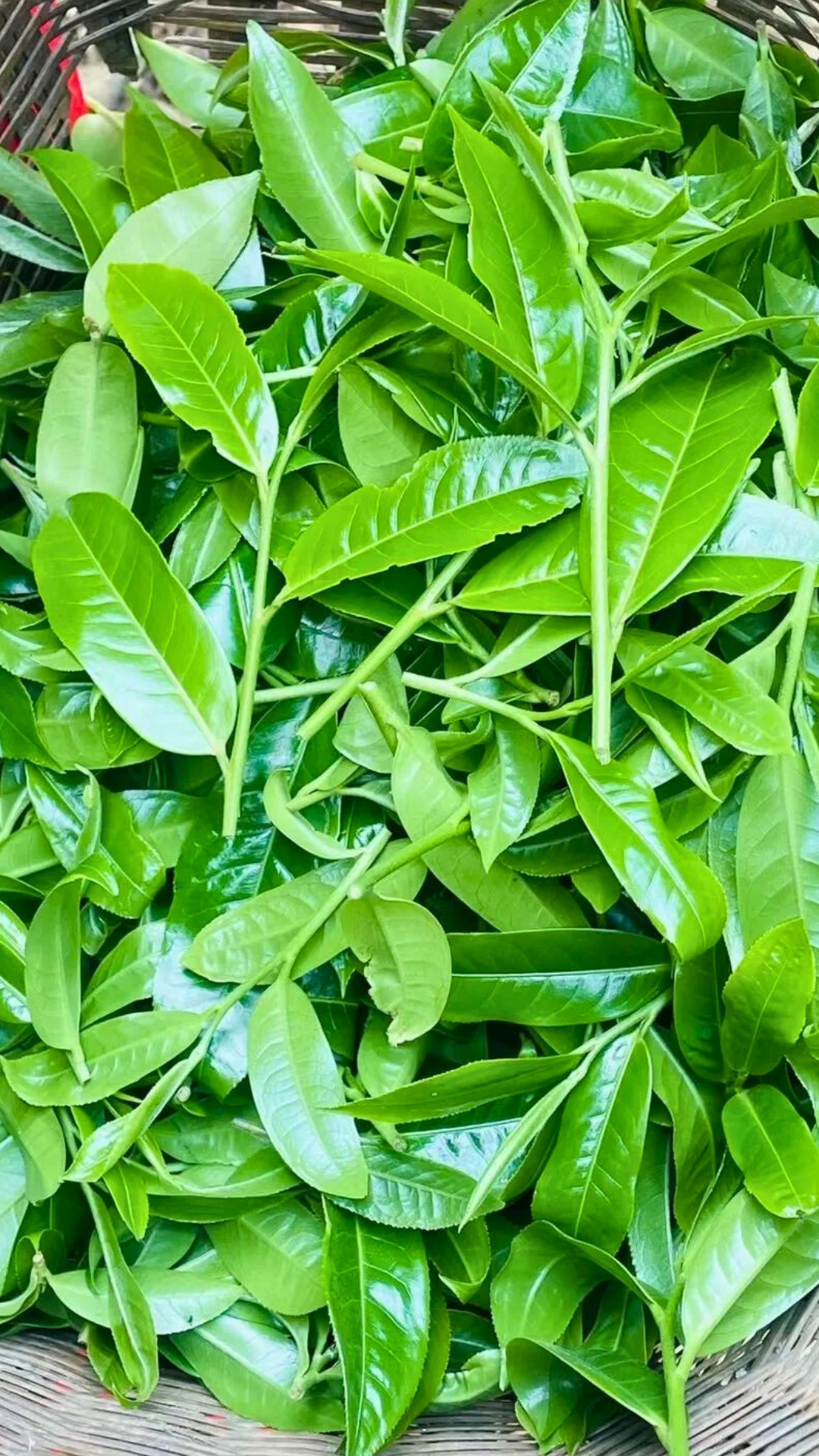
There’s something enchanting about a good raw pu’er, and this one has truly captured my attention. From the moment I opened the pouch, the dry leaves greeted me with a crisp, forest-like aroma, reminiscent of fresh pine needles and morning dew on a cool spring day. The leaves were beautifully twisted, with a mix of silvery buds and darker leaves, showing its quality at a first glance.
The rinse revealed an incredible vibrancy in the aroma—a combination of wet stone, fresh grass, and a faint floral sweetness that lingered in the air. On the first steep, I was struck by its bright and lively character. It carried a delightful bitterness, not overpowering but awakening, like the first sip of a strong espresso, followed by a sweet aftertaste that danced on my palate.
I brewed this Gongfu style, and as the steeps progressed, the tea transformed beautifully. By the third infusion, a gentle fruitiness emerged, something akin to green apricots, paired with a light nutty undertone. By the fifth steep, a soft mineral flavor took center stage, with just a hint of honeyed sweetness. The texture was smooth, almost silky, leaving a pleasant dryness on the palate.
What I love most about this raw pu’er is its energy—it’s vibrant, uplifting, and perfect for clearing the mind. The tea had a surprisingly strong cha qi (tea energy), leaving me feeling focused and calm after a few cups. It’s the kind of tea you want to sip and reflect on, preferably while staring out of a window on a rainy afternoon.
For those new to raw pu’er, this might lean a bit strong on the bitterness in the earlier steeps, but if you give it patient attention, it rewards you with a beautiful complexity that only deepens with time. I imagine it will age wonderfully, though it’s already stunning as is. I can’t wait to revisit this tea in a few years to see how it develops.
Overall, this raw pu’er is a fantastic example of what this category of tea can offer—bright, complex, and layered with character. It’s undoubtedly one of my favorites this year.
Full of wild flavor, exceptionally fresh and savory, with a sweet aftertaste. Drinking a few cups in the morning is very invigorating.
Very good, it has the charm of old tree tea. One bud with 2 or 3 leaves, the buds have white tips, and the quality is very high. Loose tea is very convenient to brew, but it’s hard to store, such a big box.


